We came to Filitosa by a circuitous route from Propriano via Sollacaro, a handsome old village perché of granite houses that almost seem to have sprouted organically from the terraced mountainside. As we descended into the Taravo valley we passed what appeared to be pumpkins hanging from the olive trees. I stopped the car and we got out for a closer look. We discovered bundles of cheesecloth tied to the branches. Perhaps it was a local cheese, a speciality of Sollacaro maturing in the olive groves?
Three green olive cheeses?
This olive tree was buzzing with cicadas. Their song was the shape of the tree.
The hills were alive with the sound of cicadas.
Down at Filitosa we found a eucalyptus tree with flaking, paper bark and curious button fruits.
And a great slab of hollow granite, a cistern of exposed ventricles, atriums and arteries.
Beside it stood this statue-menhir, armed with a dagger and a sword, but I didn’t photograph it.
This photo is taken from the Filitosa website.
Filitosa is essentially a collection of rocks and trees, a megalithic sculpture park. Like much of Corsica, it is littered with enormous boulders. Those with cavities beneath them are classified as shelters. Smaller stones, erected as menhirs and carved with faces, stand to attention like petrified guardians.
Eduardo Chillida would have loved this naturally figured boulder.
L’Oppidum, the central monument, arranged with a line of statue-menhirs.
The Torre or western monument, a rock outcrop enclosed by stone walls and subterranean cellars.
From up here we could look out over the River Barcajolo to the plain beyond, where horses and cattle grazed the scrub and five statue-menhirs were aligned before a millennial olive tree. The standing stones were discovered lying on the ground in 1946 by the owner of the land, Charles-Antoine Cesari.
※
When we had talked about the weather and the health of the different members of the family Jean told Charles-Antoine that we wanted to see the statues. ‘But of course! We’ll go immediately!’ cried Charles-Antoine, laughing, as though humouring some hilarious foreigners’ caprice. And he pulled on a wide-brimmed black felt hat, strapped a cartridge belt to his waist and took a gun from the wall. The father, too, seized a gun; in out-of-the-way parts of Corsica it was still considered unwise to leave home unarmed. And no doubt with good reason. This particular district, at any rate, has been a trouble centre: a man was found mysteriously murdered at Filitosa well after my first visit.
We walked out into the hot sun, down a footpath into a valley, Charles-Antoine striding beside us, the father skipping ahead, his gun held ready as though spoiling for something to shoot. The landscape was spellbinding by its air of deep antiquity. Oversized olives grew out of rank grass all over the slopes and hollows, their trunks twisted and knotted by age, their branches covering the ground with a continuous fluttering lacelike shade. Huge boulders, fantastically shaped, rose between them, in which the action of the weather had scooped many shelters and shallow caves. One could imagine them to be the homes of those who inhabited these hills; and once, perhaps, they were.
‘What a marvellous thing, an olive tree!’ exclaimed Charles-Antoine, picking up a little shrivelled black olive from the ground. ‘See! One has nothing to do to make it make money. The olives fall of their own accord and then one gathers them and carries them to the nearest press and then one sells their oil. And it’s good, my oil; you’ll taste it.’
‘That’s true,’ Jean said. ‘Charles-Antoine’s oil is very good and he has a great many trees. He’s a very rich man, you know.’
This, by local standards, was true. All the same the methods described by Charles-Antoine, which were then followed all over Corsica, are not really the best for making olive trees earn money. The olives lie on the ground until enough have fallen to be worth gathering – this intermittent harvesting continues on and off from November till April – with the result that many of the olives are overripe by the time they go to press and the oil has a peculiar musty, fruity flavour which townspeople dislike. Moreover, many of the presses are the old, beautiful, inexpert machines of wood and stone, worked by hand or by mule, which by modern standards do not sufficiently filter the oil. In consequence there is no regular market for Corsican olive oil; it is disposed of according to the immortal practices of subsistence farming: a man who produces mainly oil sells it to one who produces mainly cheese, or wine. Many, in fact, do not bother to gather their olives at all, for the cost of labour hardly allows for a profit. So all over Corsica one comes upon neglected groves of centennial trees with their produce rotting at their roots.
We crossed a little stream, full of watercress and wildflowers. The hills enclosed us; like waves, so it seemed, for the silvery foliage of the olives gave an unbroken rippling surface, as of water, to every slope.
Jean was pushing ahead, up a grassy bank, towards a granite outcrop covered with maquis vegetation. ‘It’s here!’ he called.
I had been prepared for disappointment, right up to the instant when I reached the spot where he stood. But the block of granite lying before us on the ground, six feet long or more, was without doubt carved by the human hand in the human form. And certainly it had some resemblance to the statue found by Mérimée. The head was clearly shaped: a large round head with protruding ears, sinister close-set eyes and a faint indication of mouth and nose. Neck and shoulders were carved from the block; but the body was simply a flattened shaft of stone, with a ridge, just discernible, crossing it diagonally: not an arm, it seemed, but a sword. It was still monstrously impressive, this hero-image lying on its back in the maquis, worn by uncounted centuries of wind and rain. The head recalled nothing I had seen so much as one of Picasso’s more brutal drawings.
‘You see!’ Jean gasped, and sat down; he had lost the habit of uphill midday walks in the maquis. ‘And there are several others somewhere around here,’ Charles-Antoine told us.
We found them. One, lying close by in a thicket, was more crudely carved, but the facial features were unmistakable. The other two were embedded, like steps, in the slope falling towards the stream. One had deeply hollowed eyes and a nose in faint relief; the other, exceptionally long, appeared to be featureless.
And so the object of much speculation, of hoping against hope, had easily, almost automatically, fallen into my hands. The statues which in London had seemed almost as insubstantial as the prophetic visions Jean had described with equal conviction, really existed: four of them, lying close together on Charles-Antoine’s land. ‘We call them the “paladini”,’ he said to me. Paladins: knights of Charlemagne; and warriors they certainly did seem to represent, but of a more remote antiquity.
Few works of art have ever made so strong an impression on me as these enigmatic, rudimentary human figures. They were uncouth, they were barbaric; yet their impact was sharpened by what I recognised as familiar in their strangeness. For they were not alien and unintelligible, like the stelae of the Mayas. The clumsy but vigorous effort to carve the human body in its true proportions, to portray man in his physical strength and dignity, foreshadowed, crudely but unambiguously, the high victories of Grecian sculpture. They moved me in the acute and disturbing way of things long lost and suddenly rediscovered, which is more poignant, far, than the shock of what is altogether unknown.
Granite Island, Portrait of Corsica: Dorothy Carrington
※
We came down off the headland into a perfumed valley. I never before smelled such a delicious scent. Wild mint and oregano were growing beside the stream, and baked by the midday sun they released an overwhelming aroma, warm and welcoming, where cattle grazed in a kind of bovine paradise.
The ancient olive tree offered a benign shade, and a communal meeting place to contemplate the standing stones. Only since their rediscovery in the 1940s have they been gathered here together. For much of their 3000 years they lay hidden in the maquis, forgotten and overgrown. Who knows how many more there might be scattered across the island, still lost and waiting to be resurrected.
On the hill above the tree is the quarry where the stones were excavated.
This great weathered rock is known as le Dinosaure.
A rough-hewn menhir.
The view looking back towards the great granite hulk of the western monument.
c o w s e e m e s e e s u e s e e y o u s e e m e s e e c o w
And then back to the tree. The Guide des Arbres Remarquables de France has it listed as no.160, L’olivier millénaire de Filitosa. Elsewhere I found it aged variously as between 1200 and 2000 years, and estimated to be the oldest olive tree in all of France.
We came away, over the perfumed Barcajolo and around the edge of the site,
through an olive grove and back to the small museum at the entrance to Filitosa.
Charles Antoine Cesari
Inventeur du site de Filitosa
7 Février 1909 – 28 Novembre 1984
※
PS: In the days that followed we often saw nets suspended under the olive trees, but we never again saw them hanging in bundles. I guess these are unrolled at harvest time and stretched from tree to tree to collect the fruits as they’re shaken from the branches. Well, so much for the cheese theory!


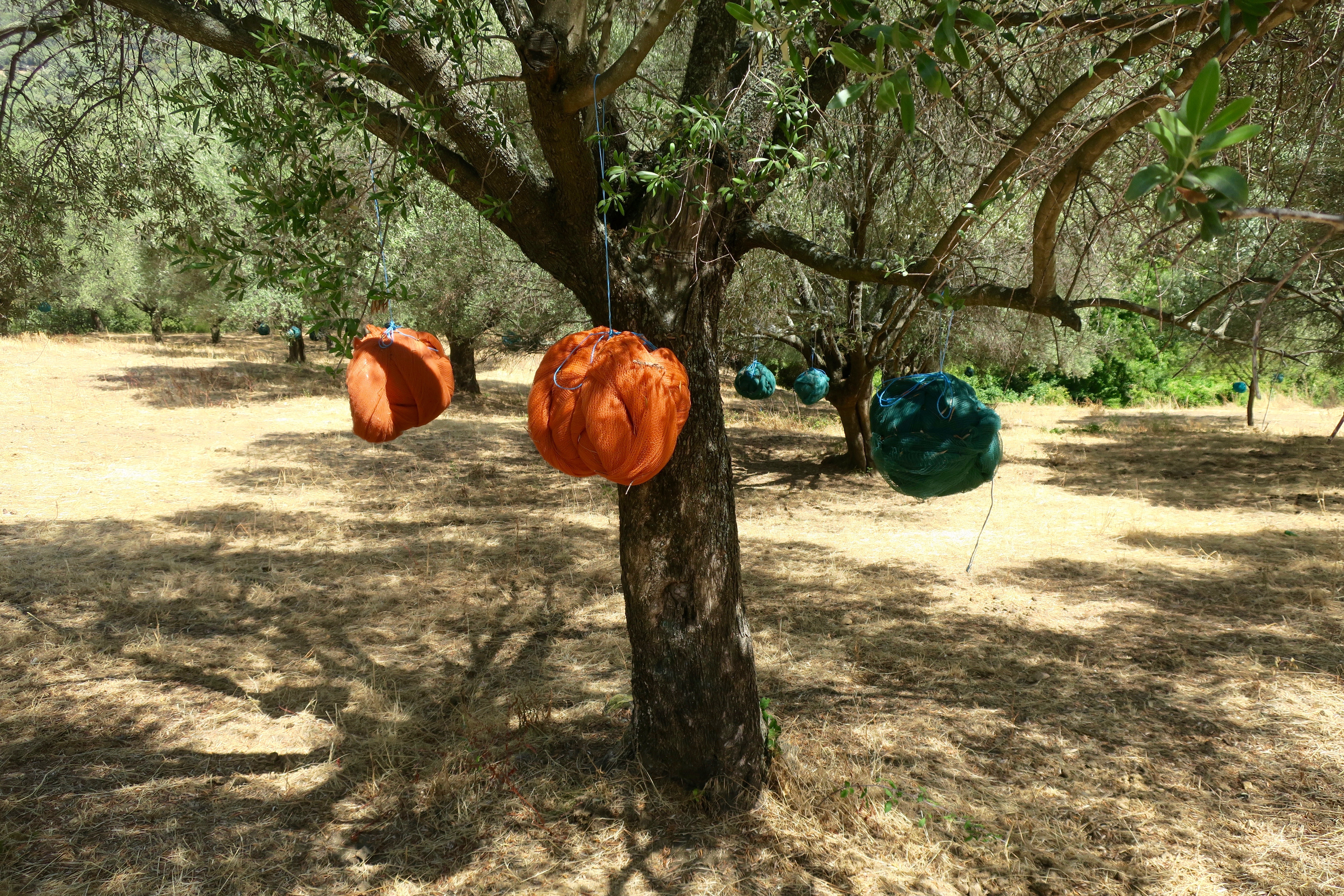
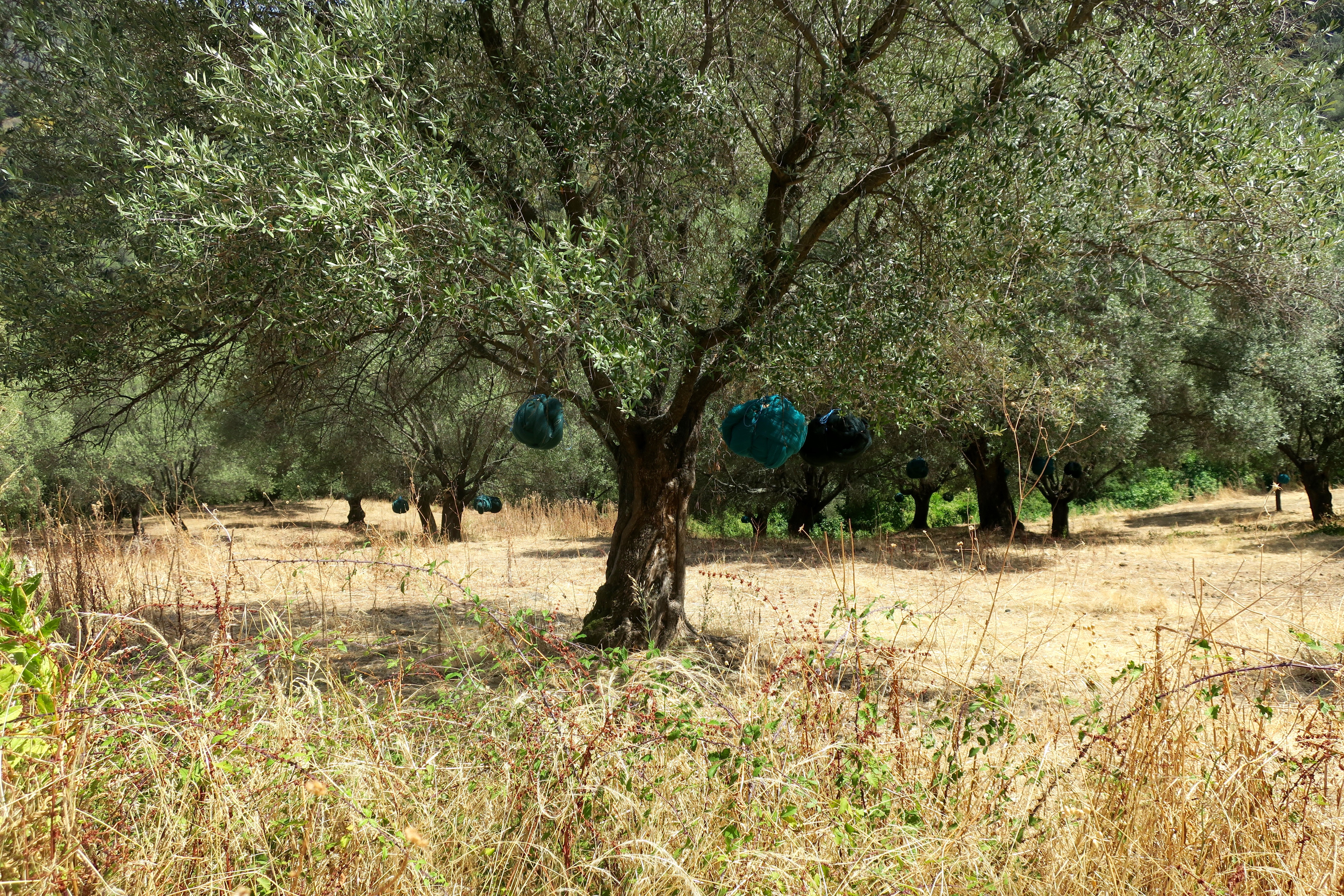
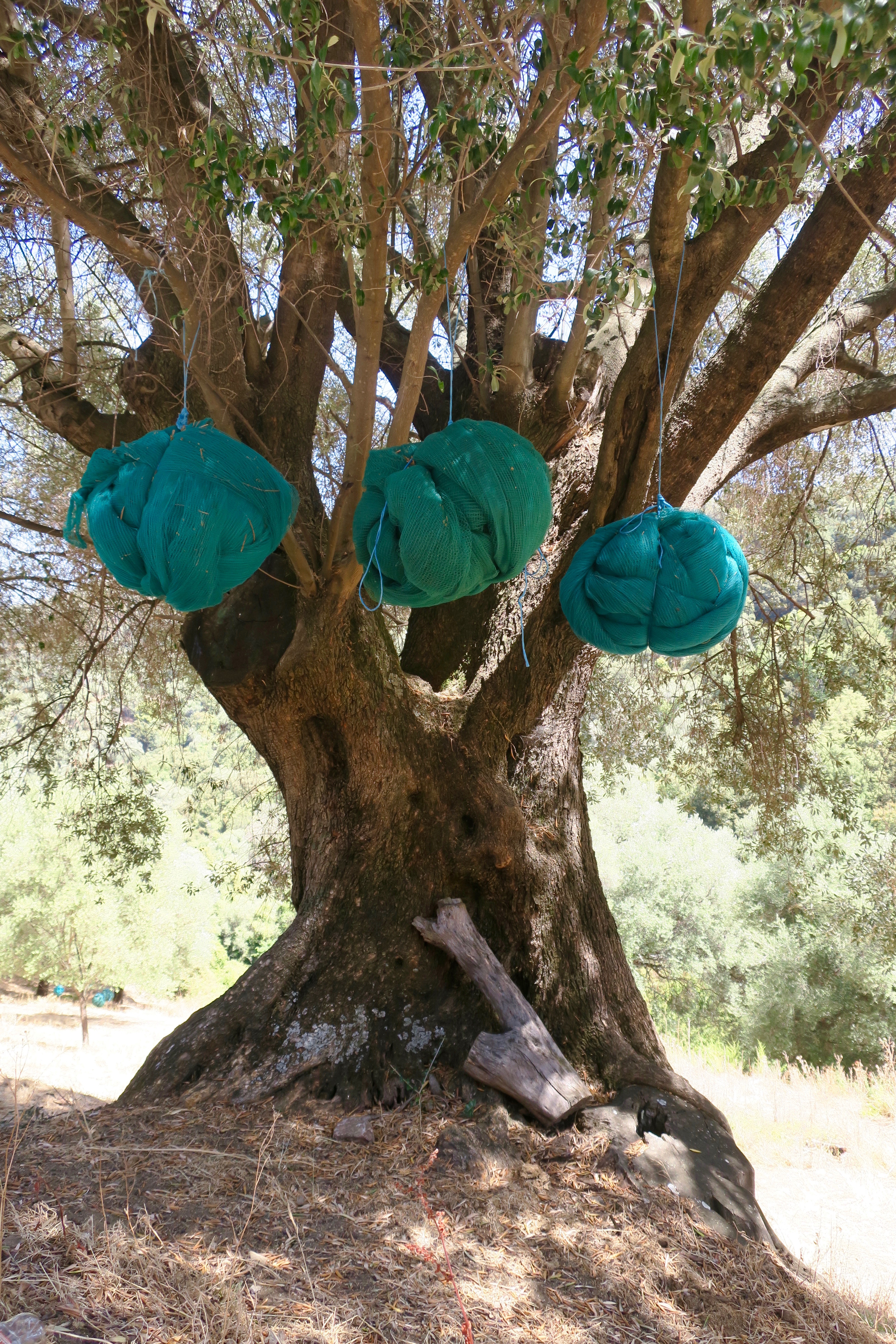
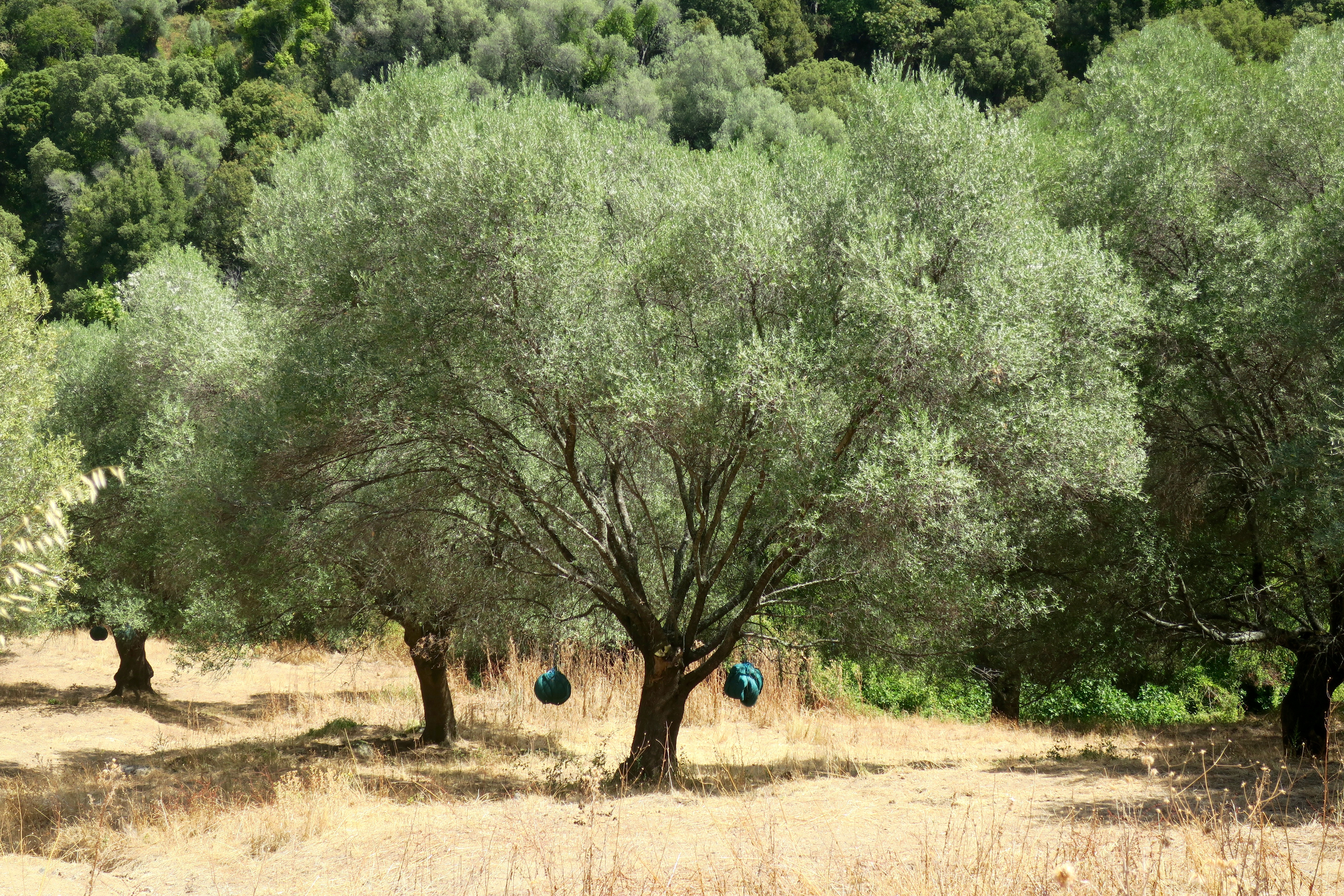

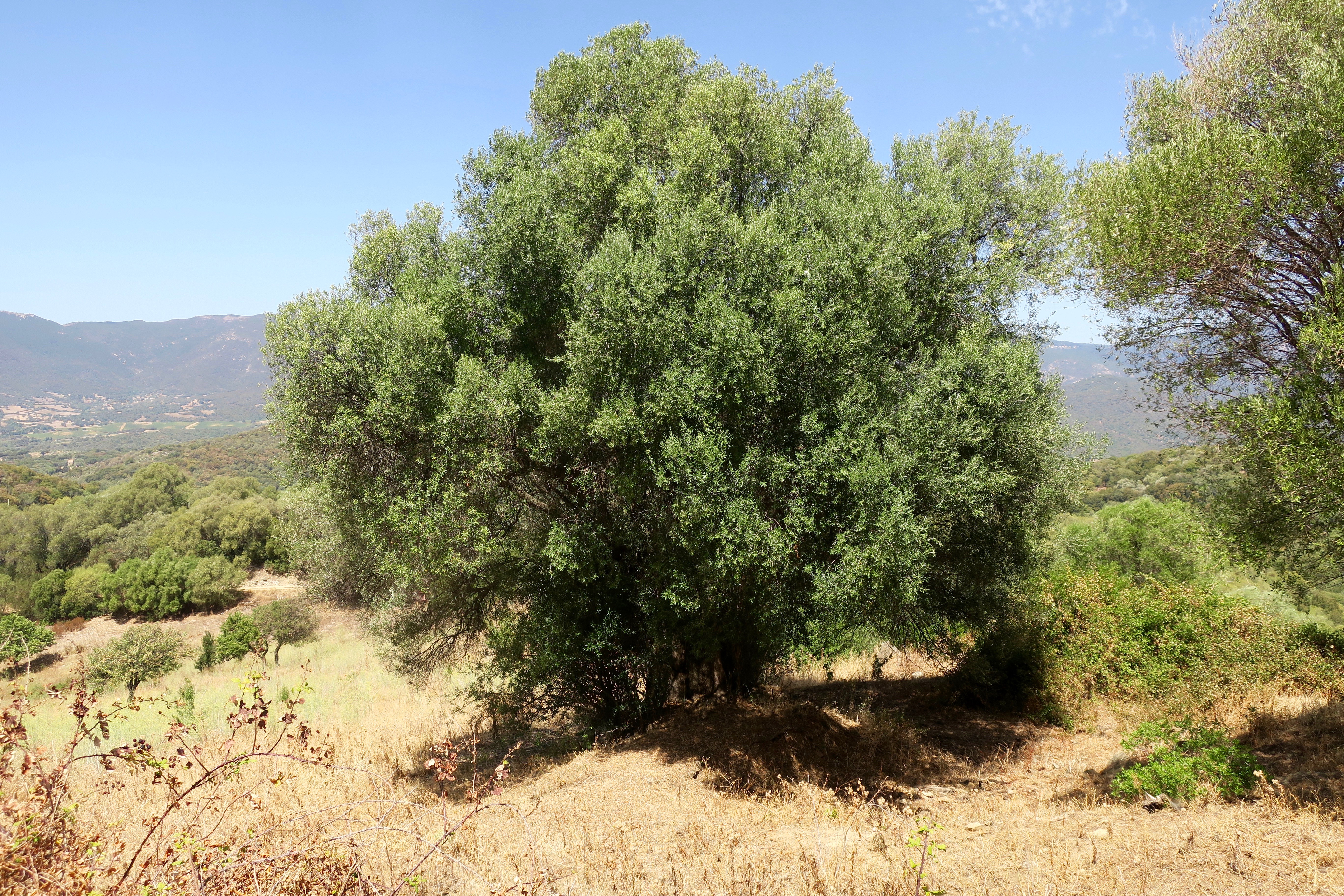

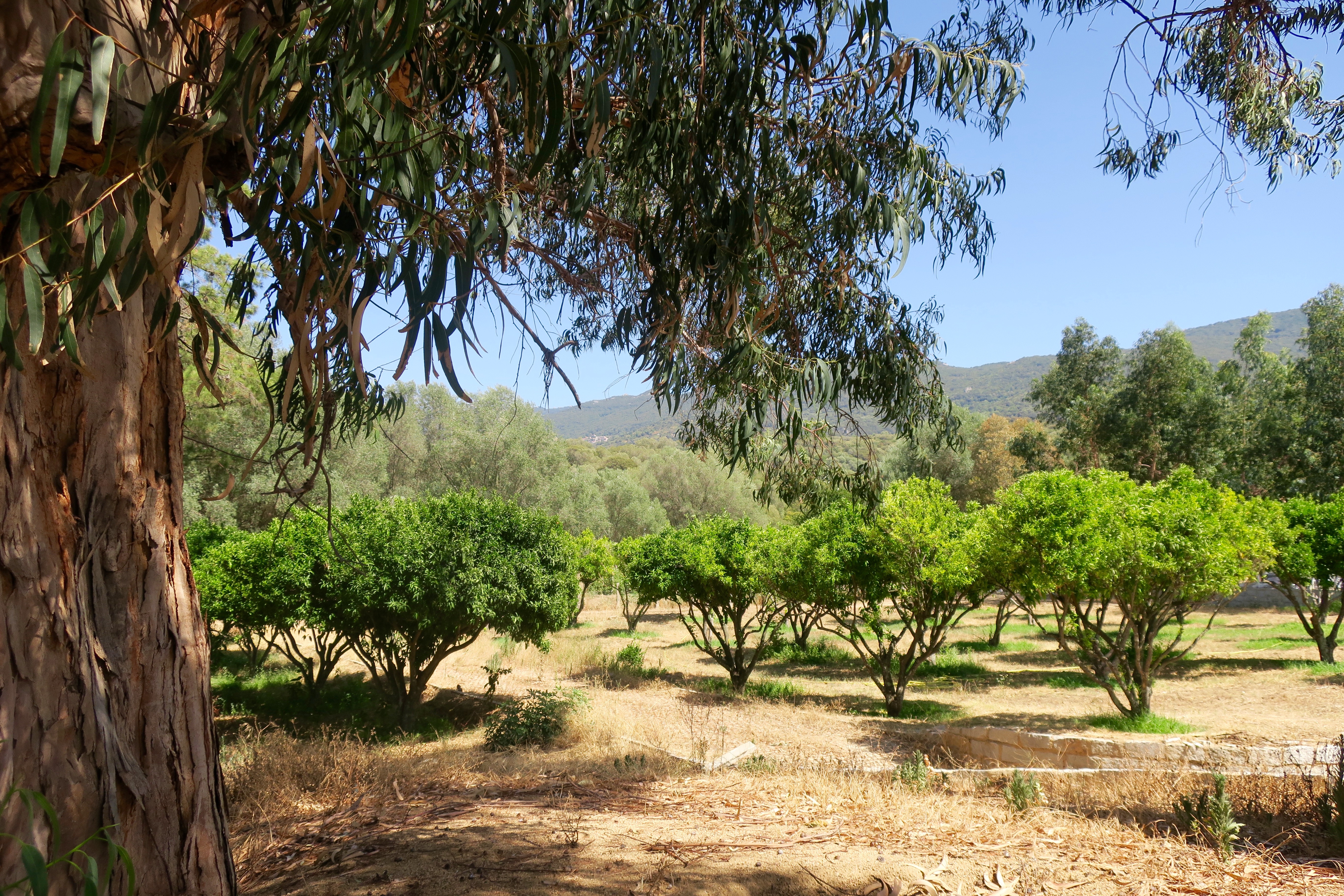
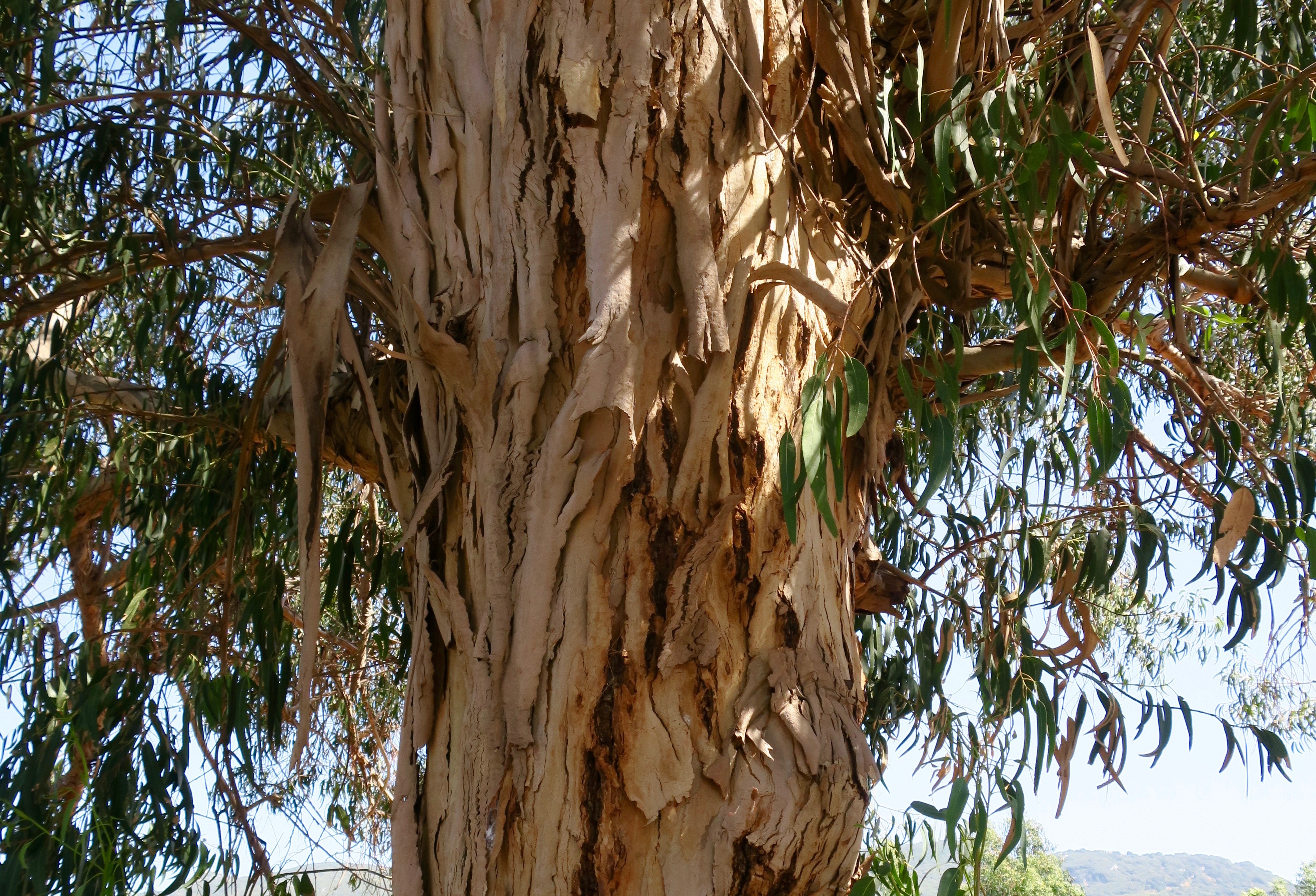
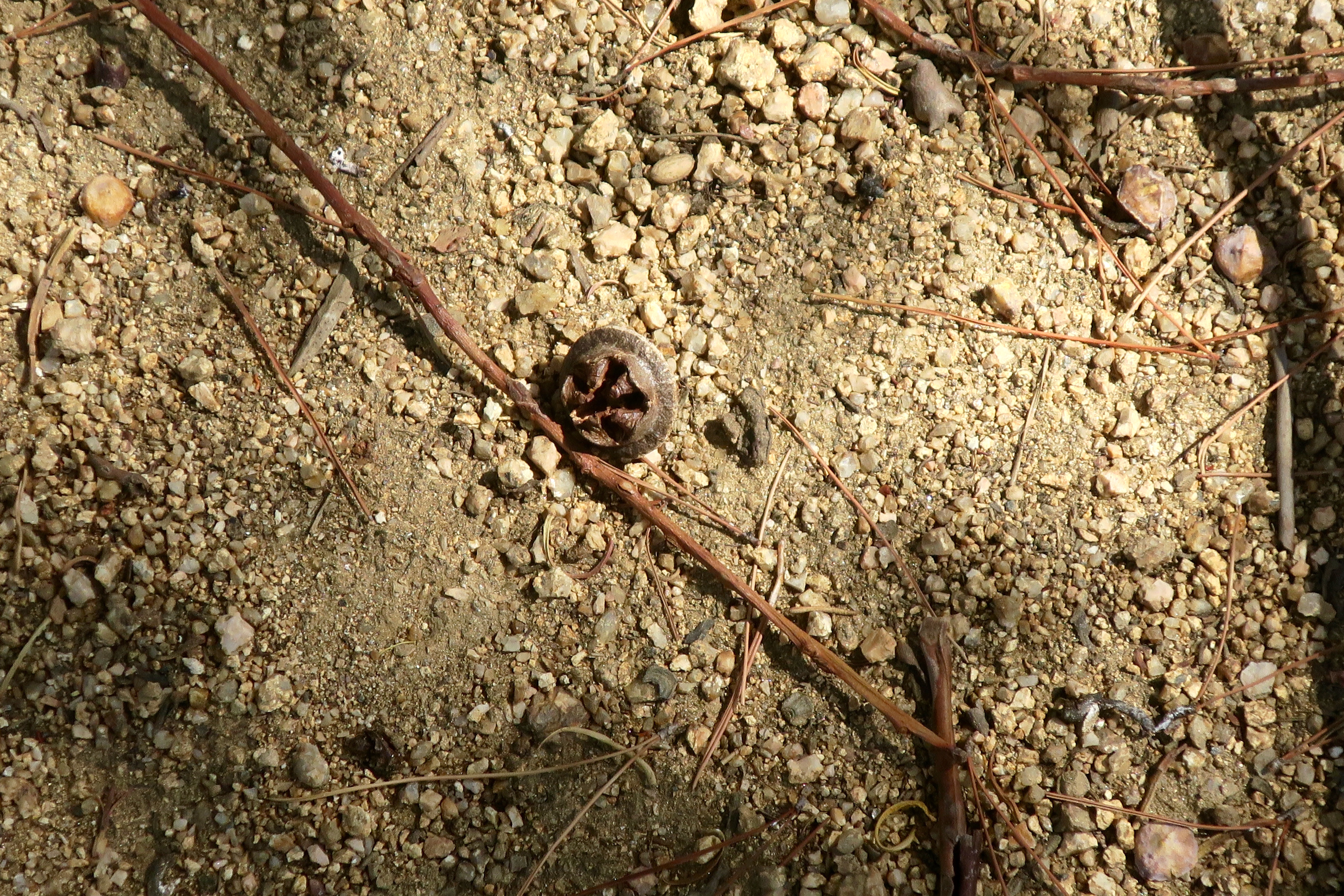

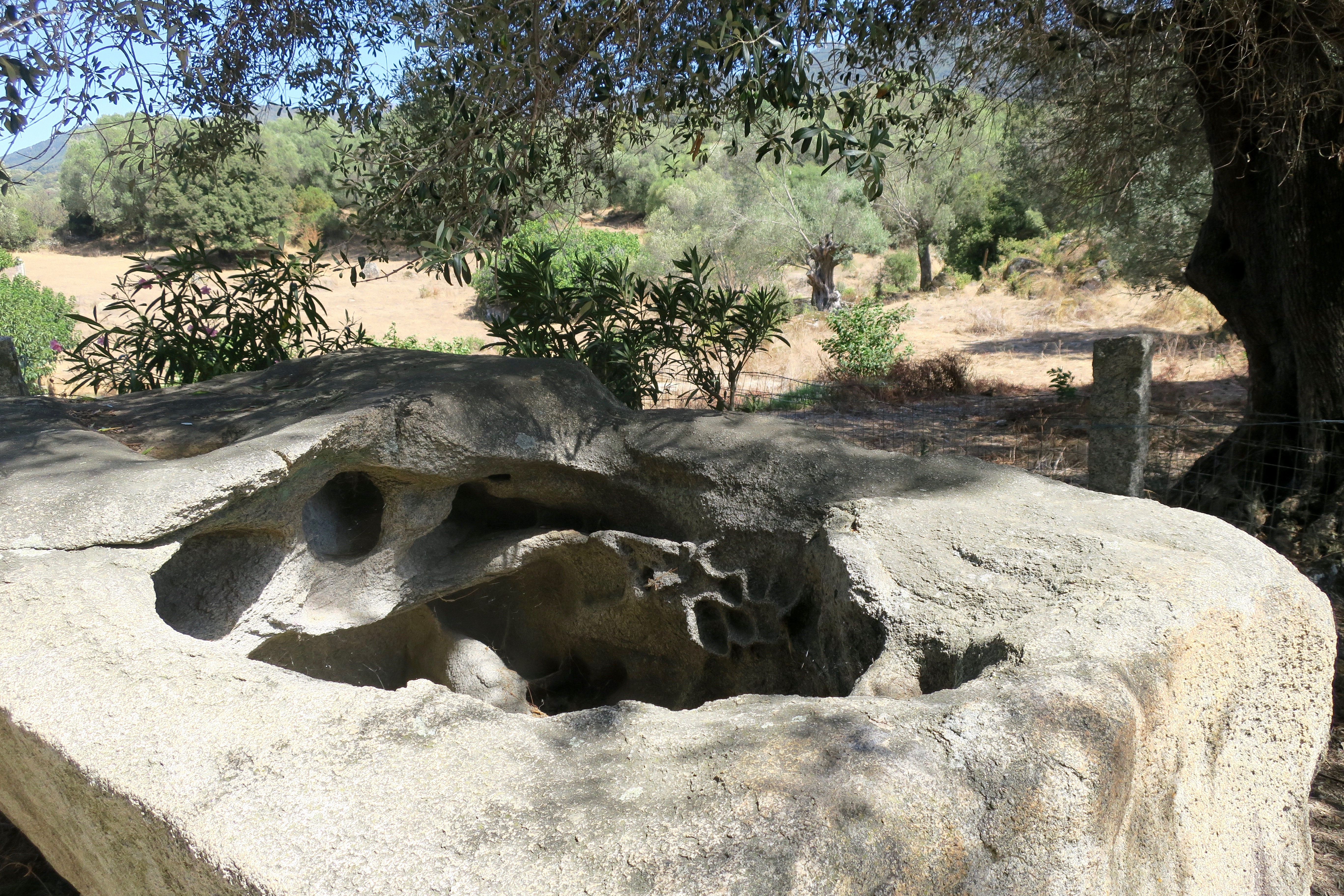
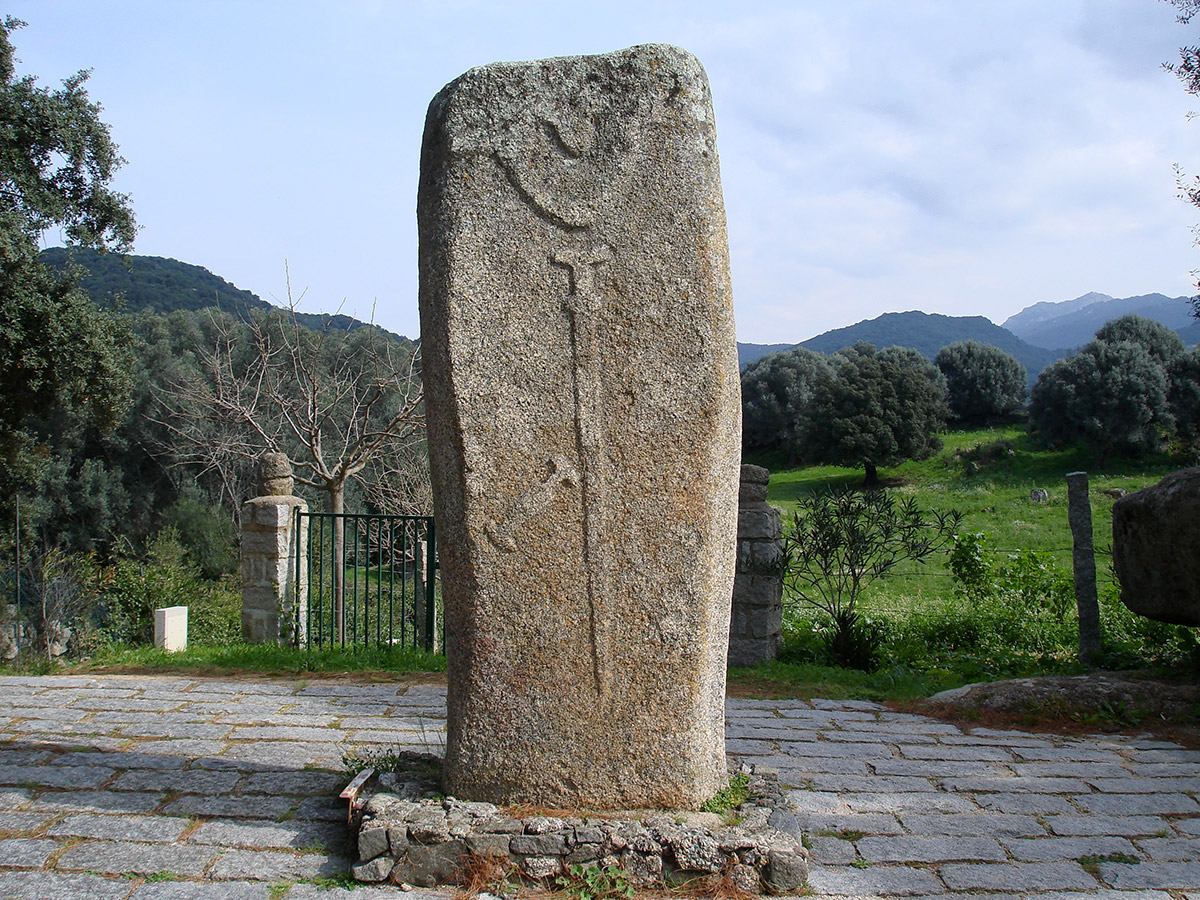


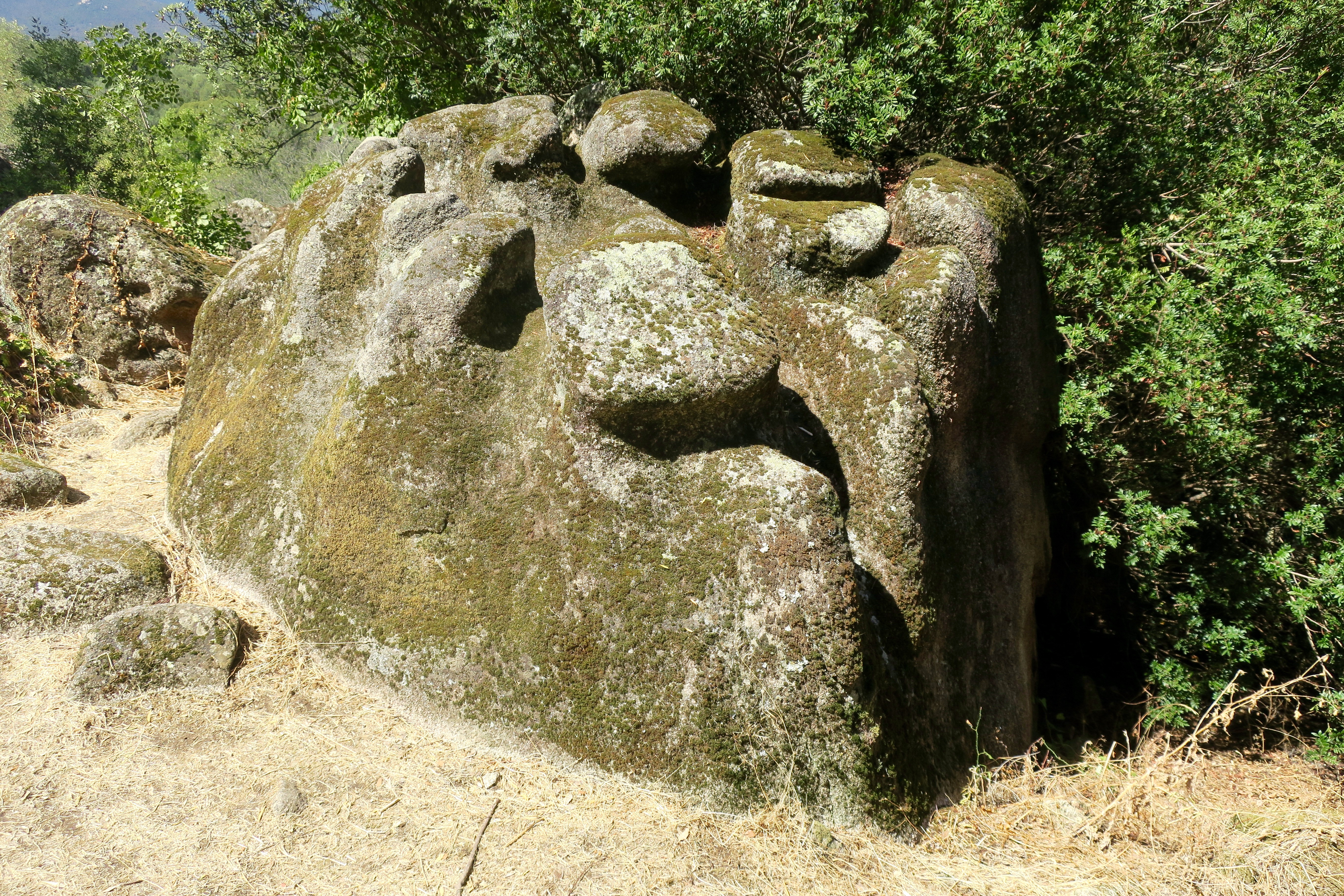
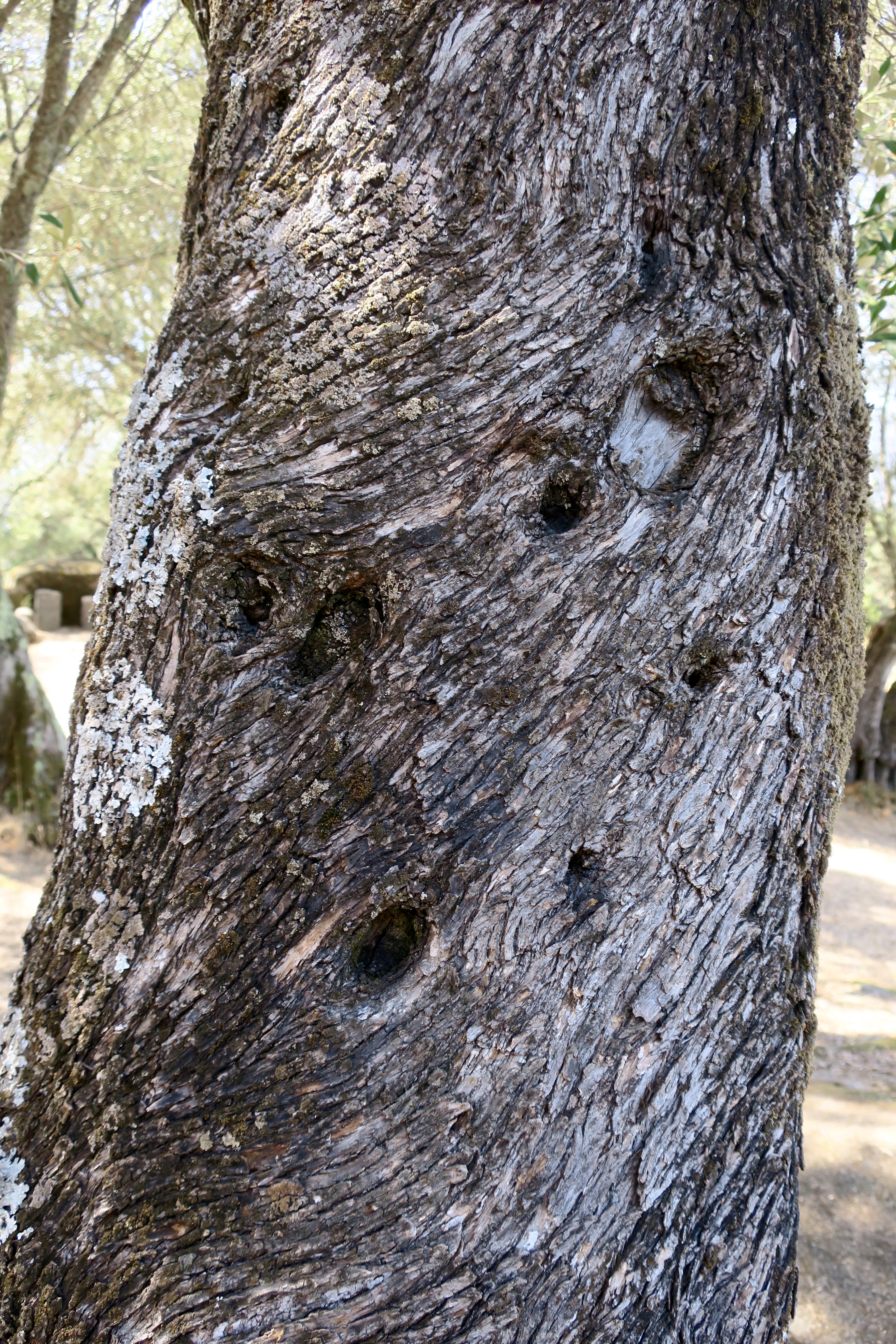
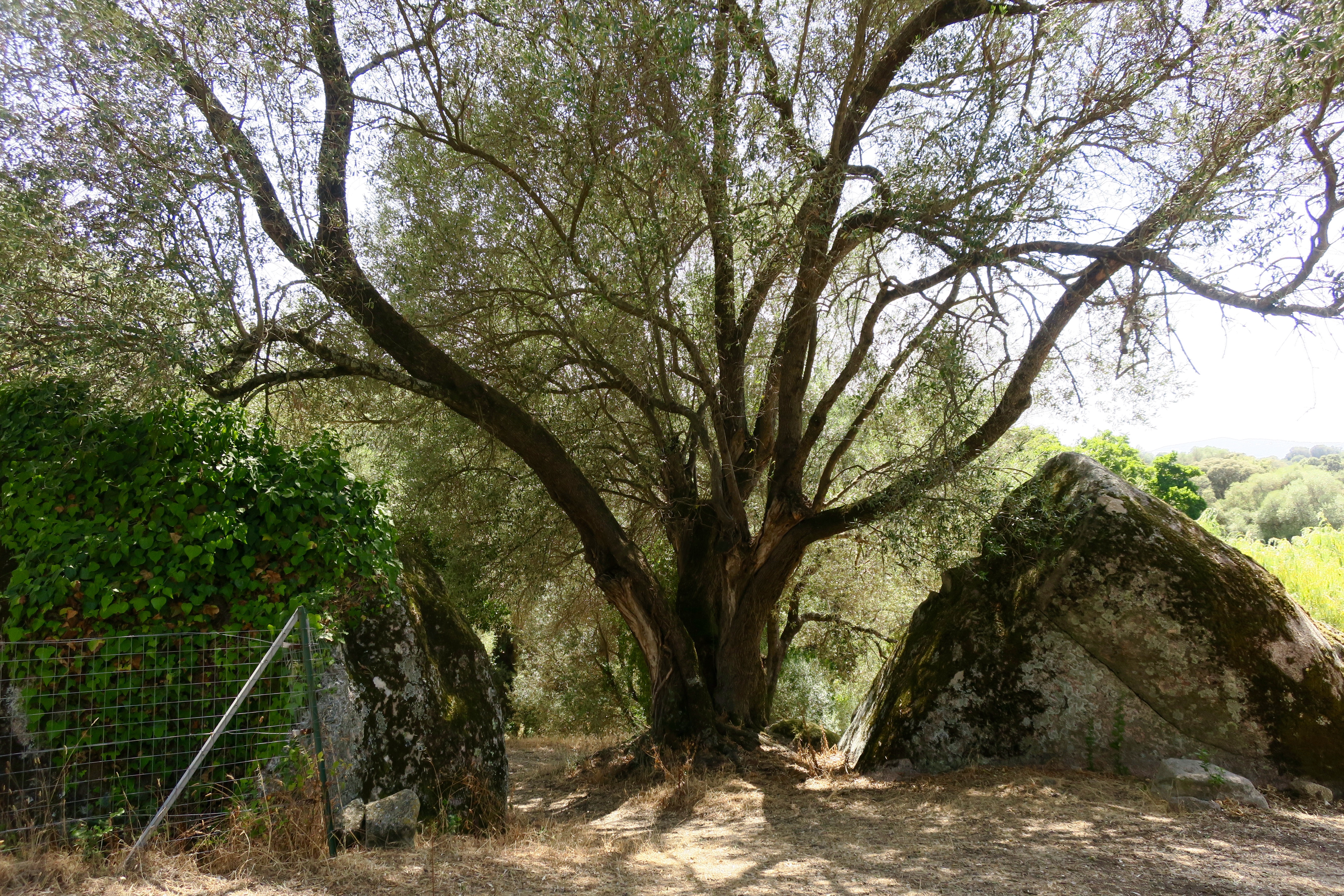
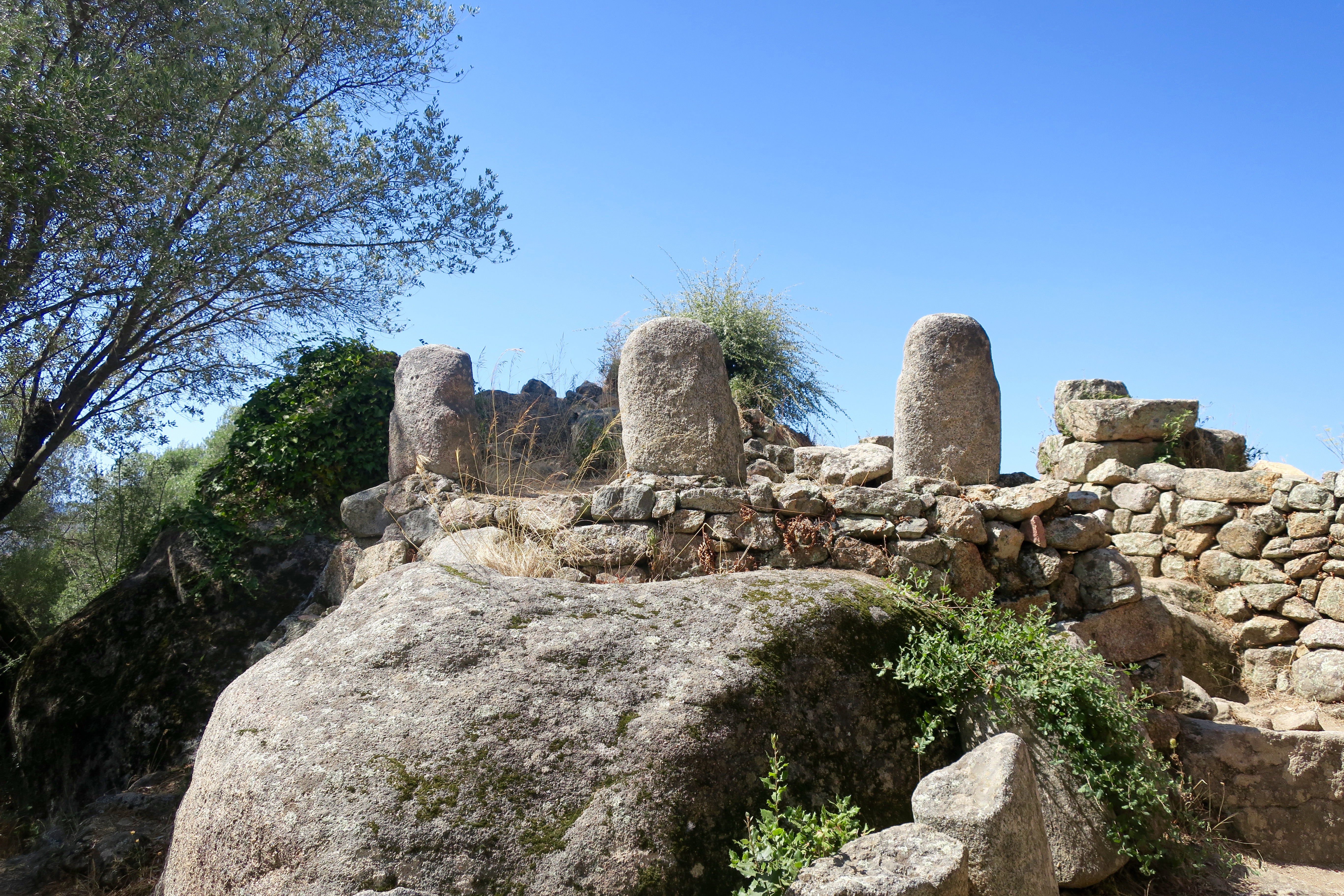
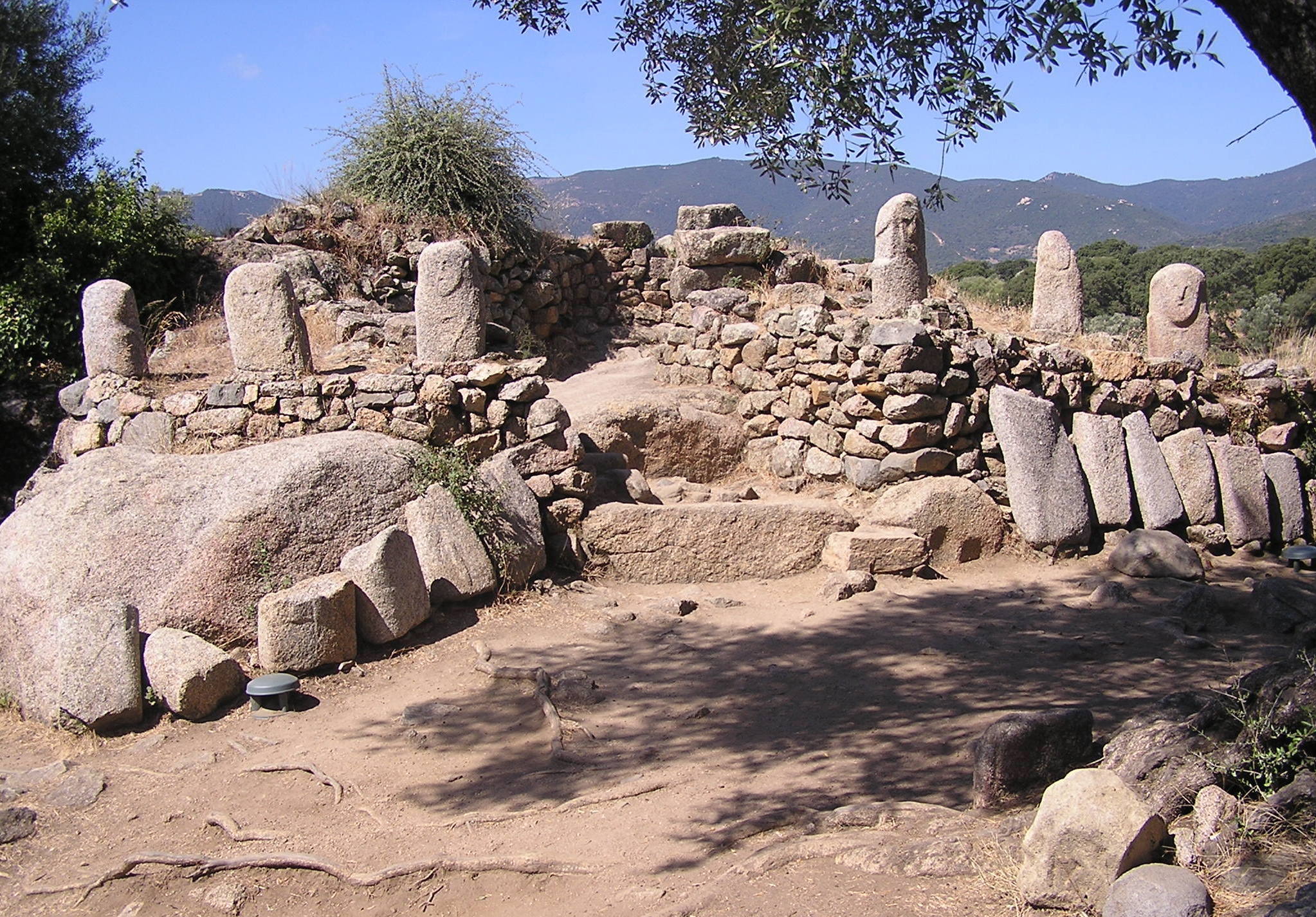
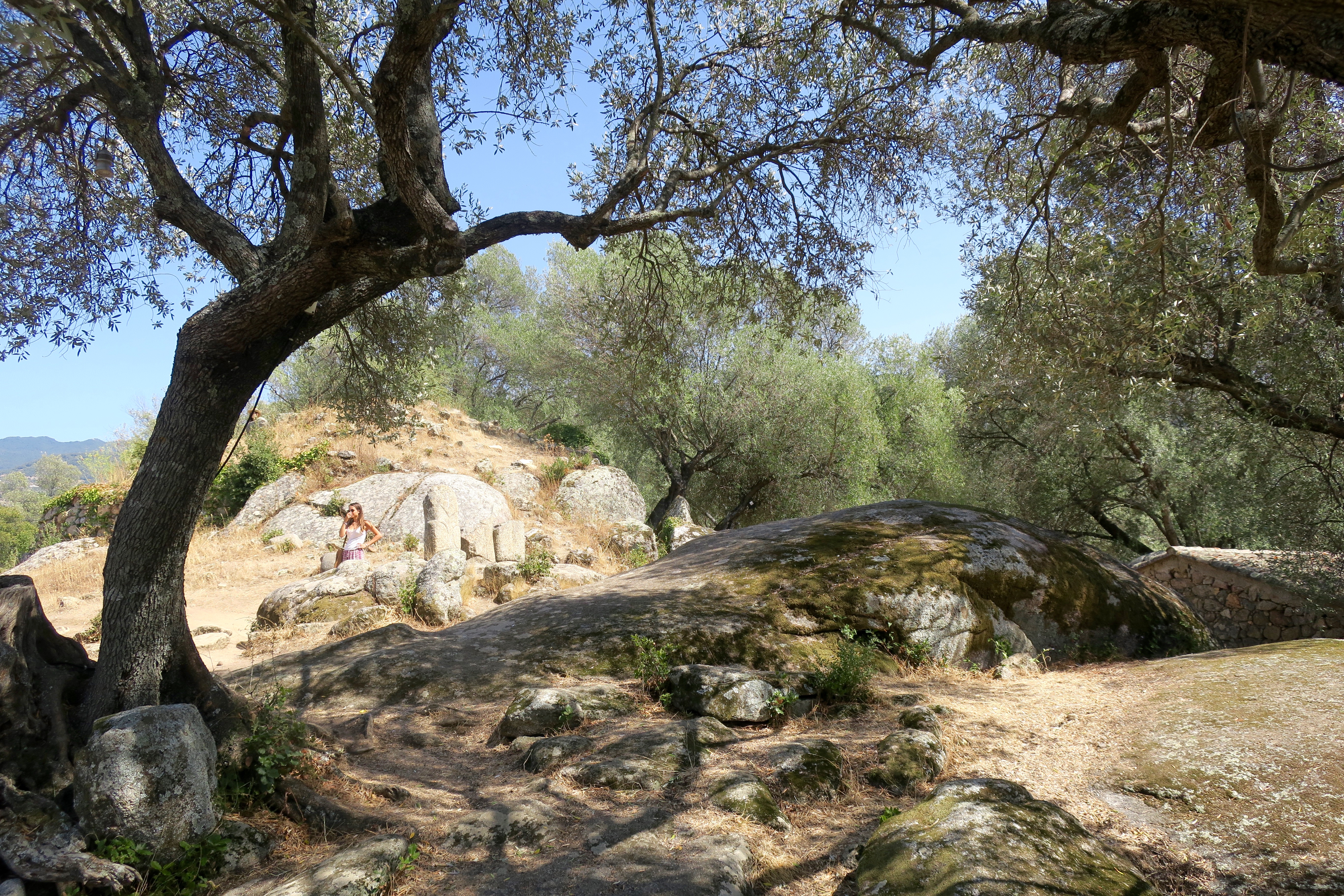
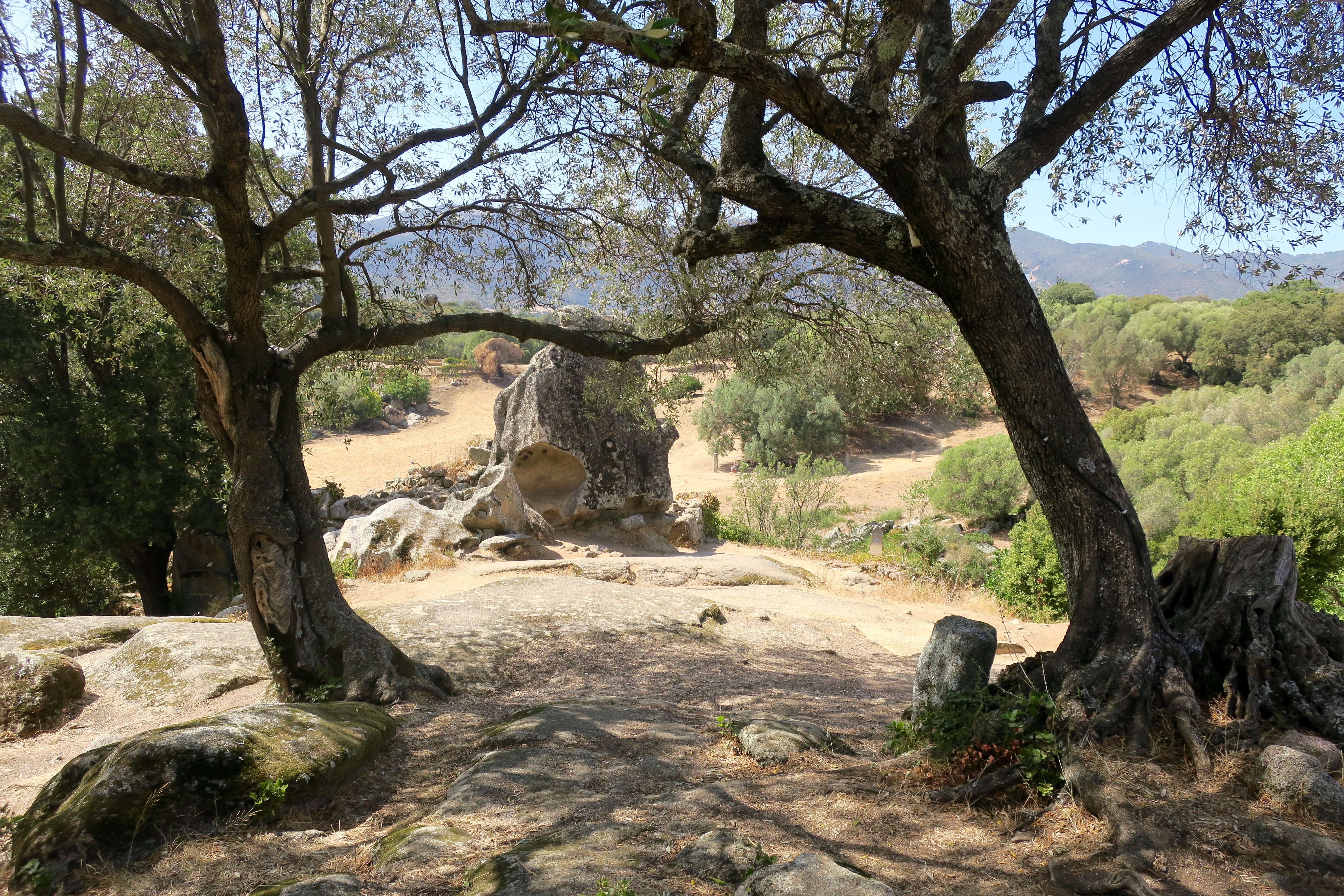


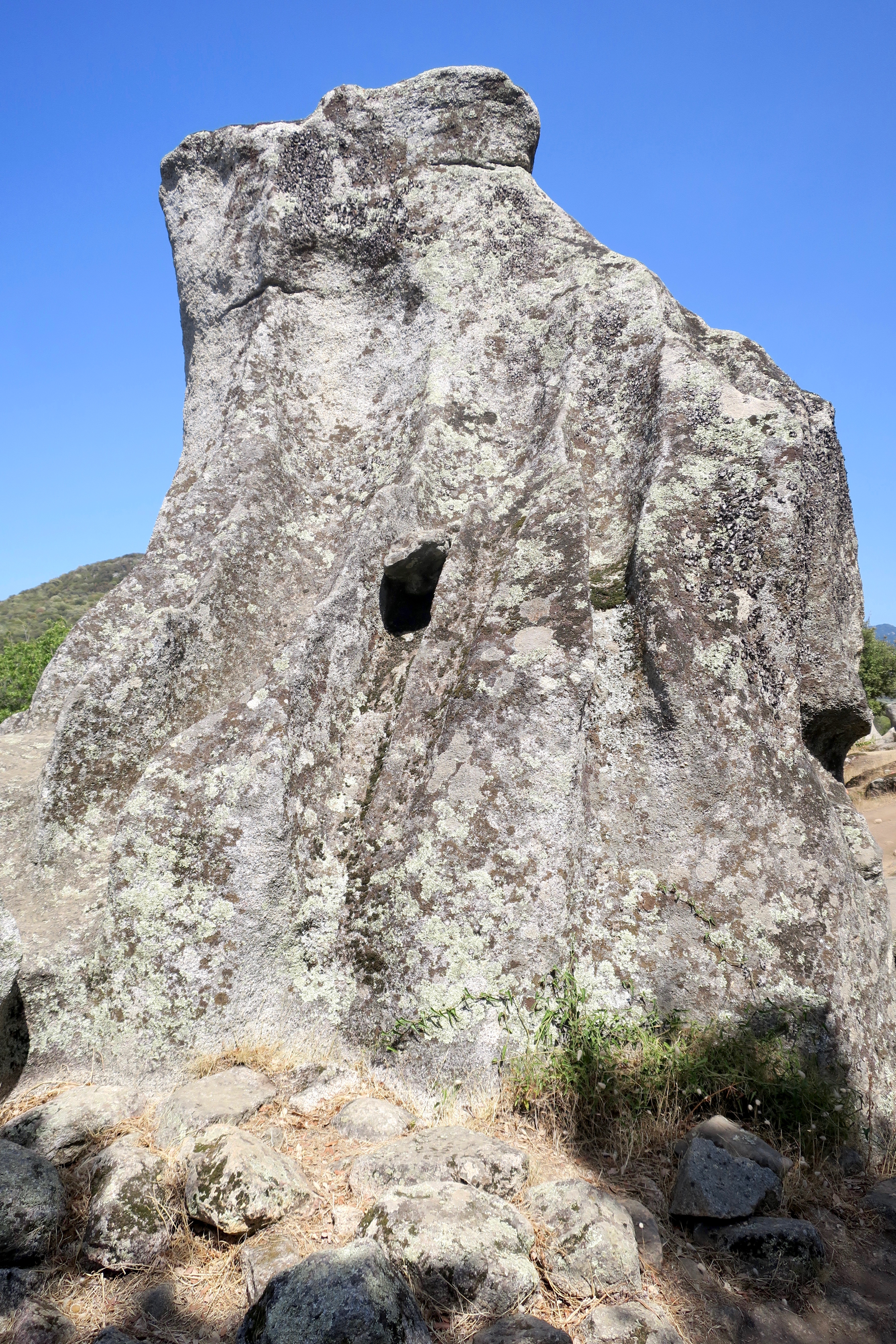

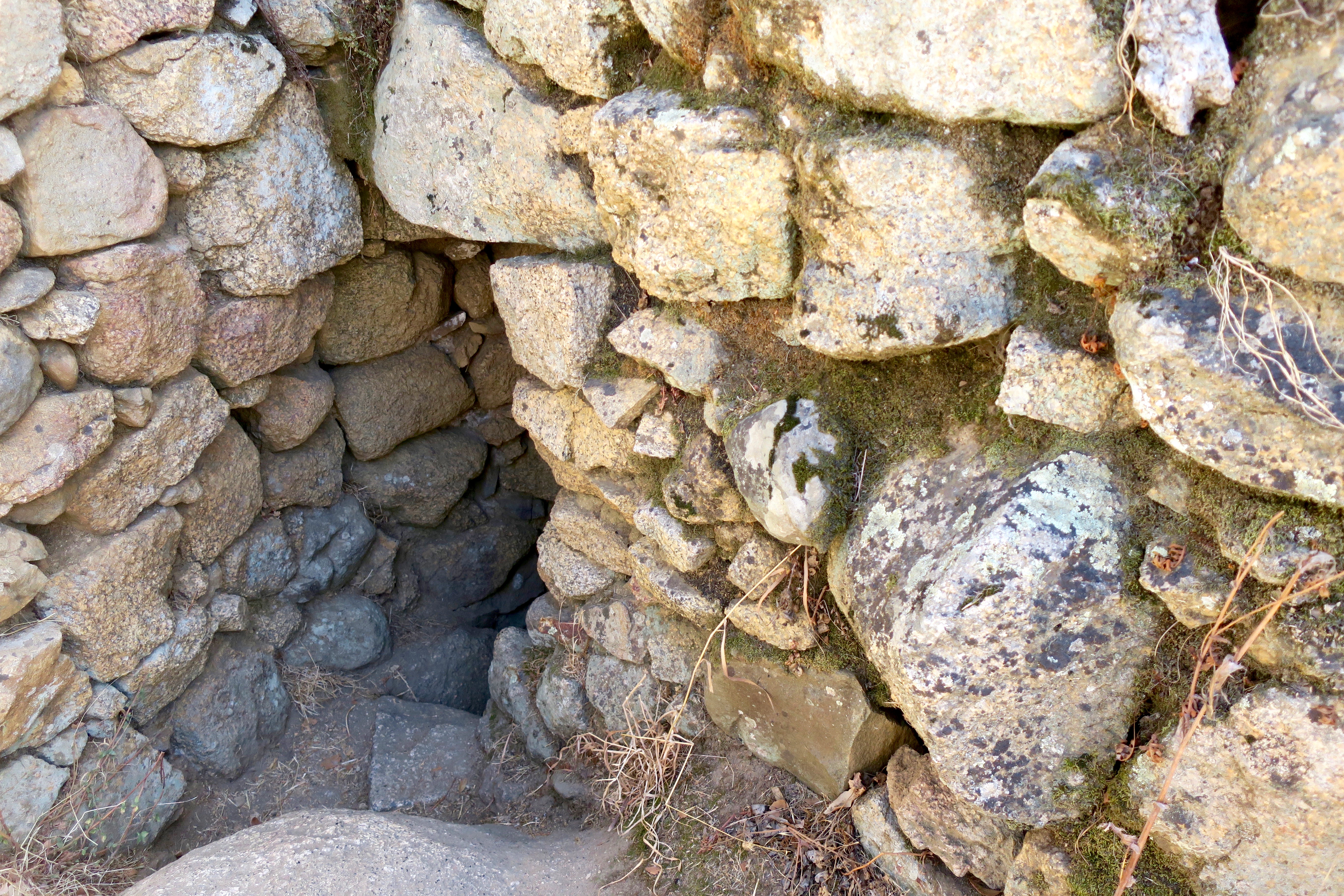
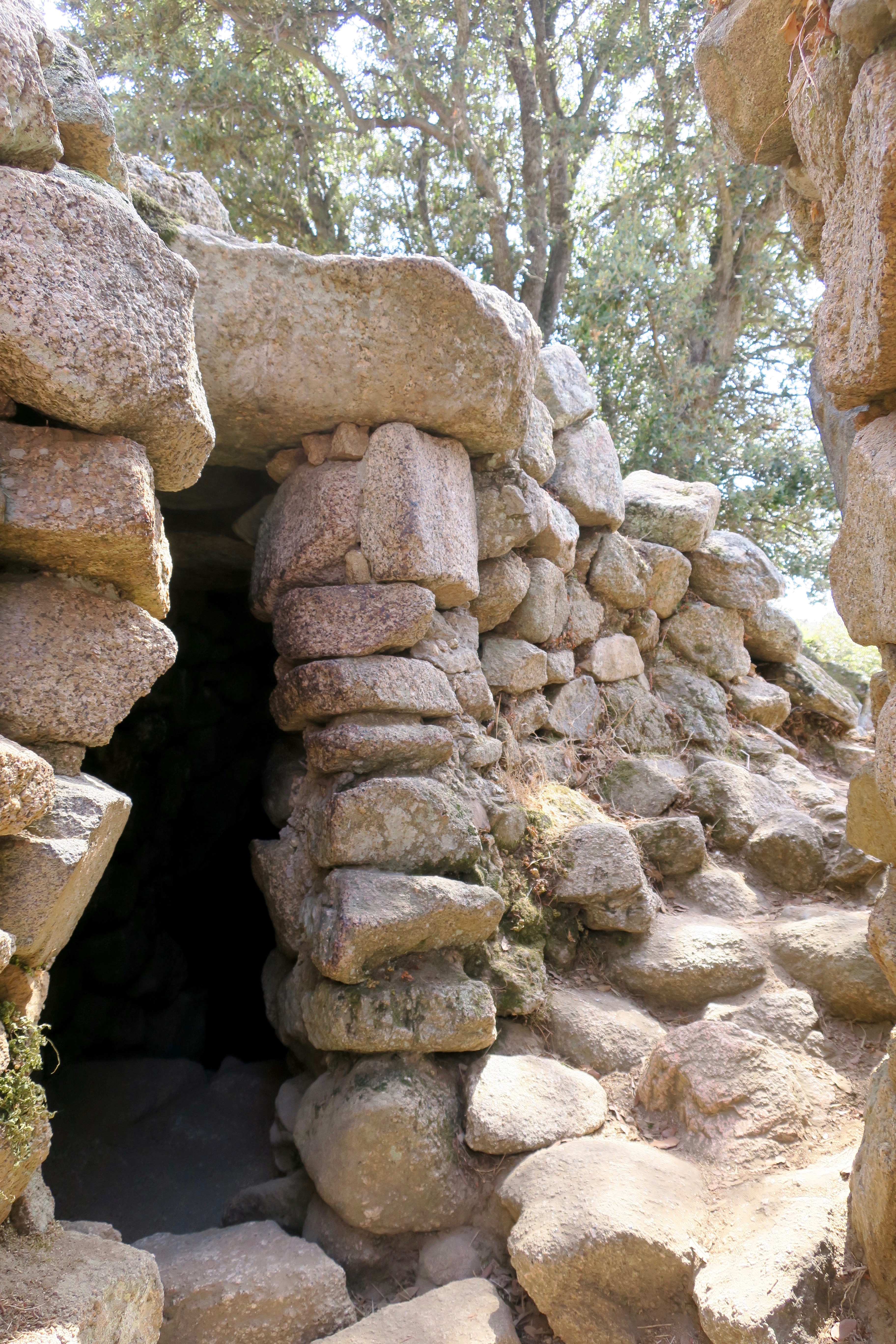
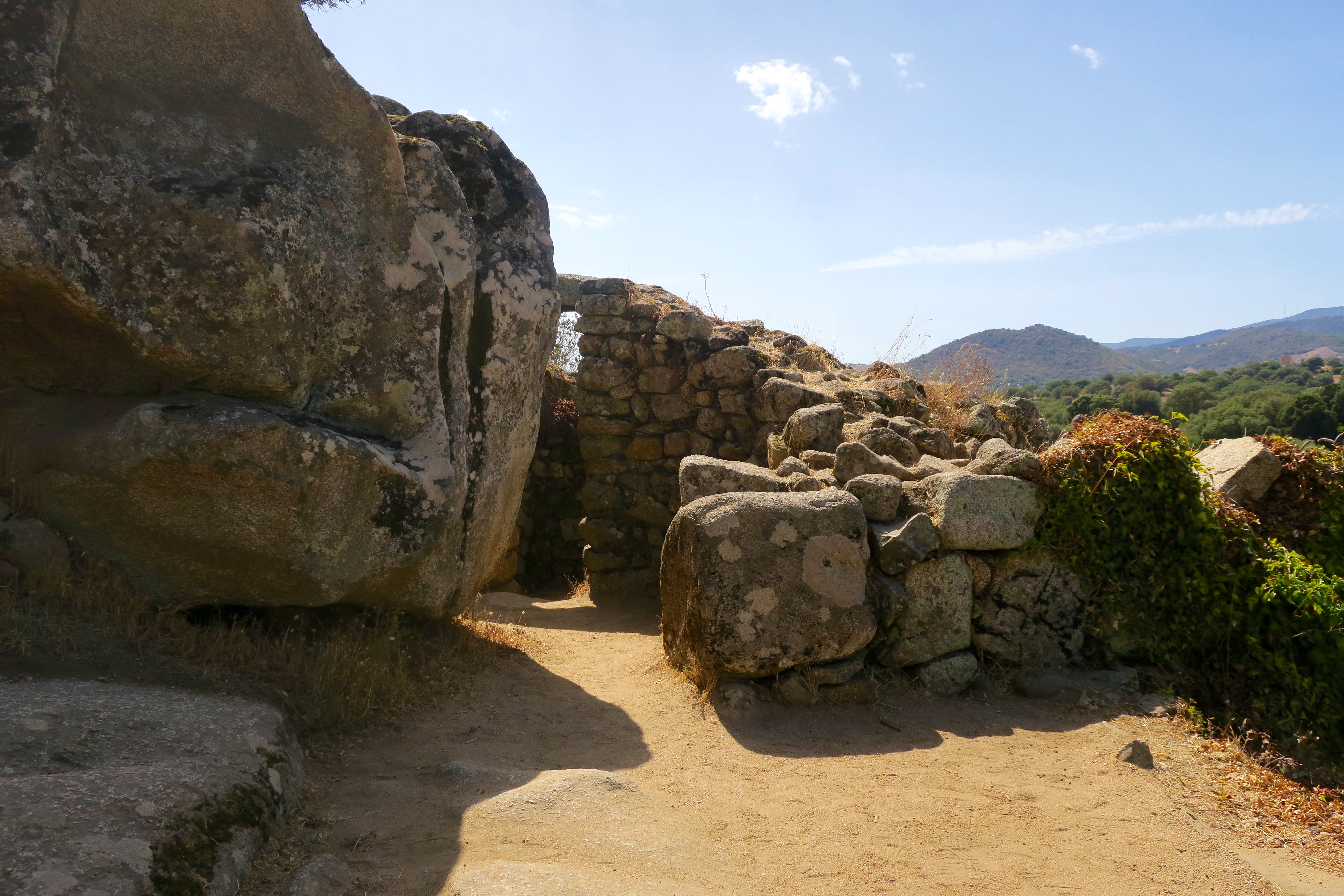
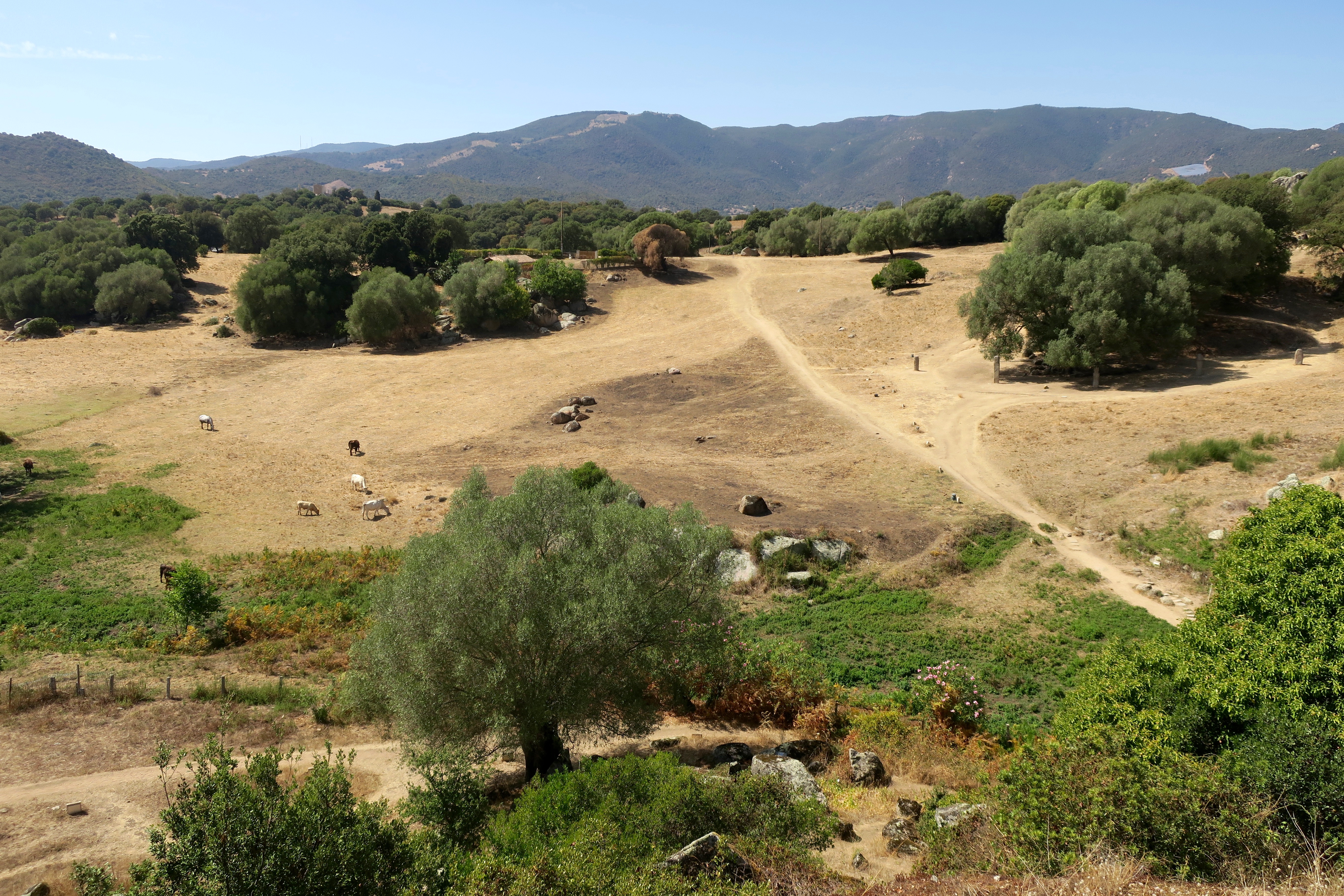
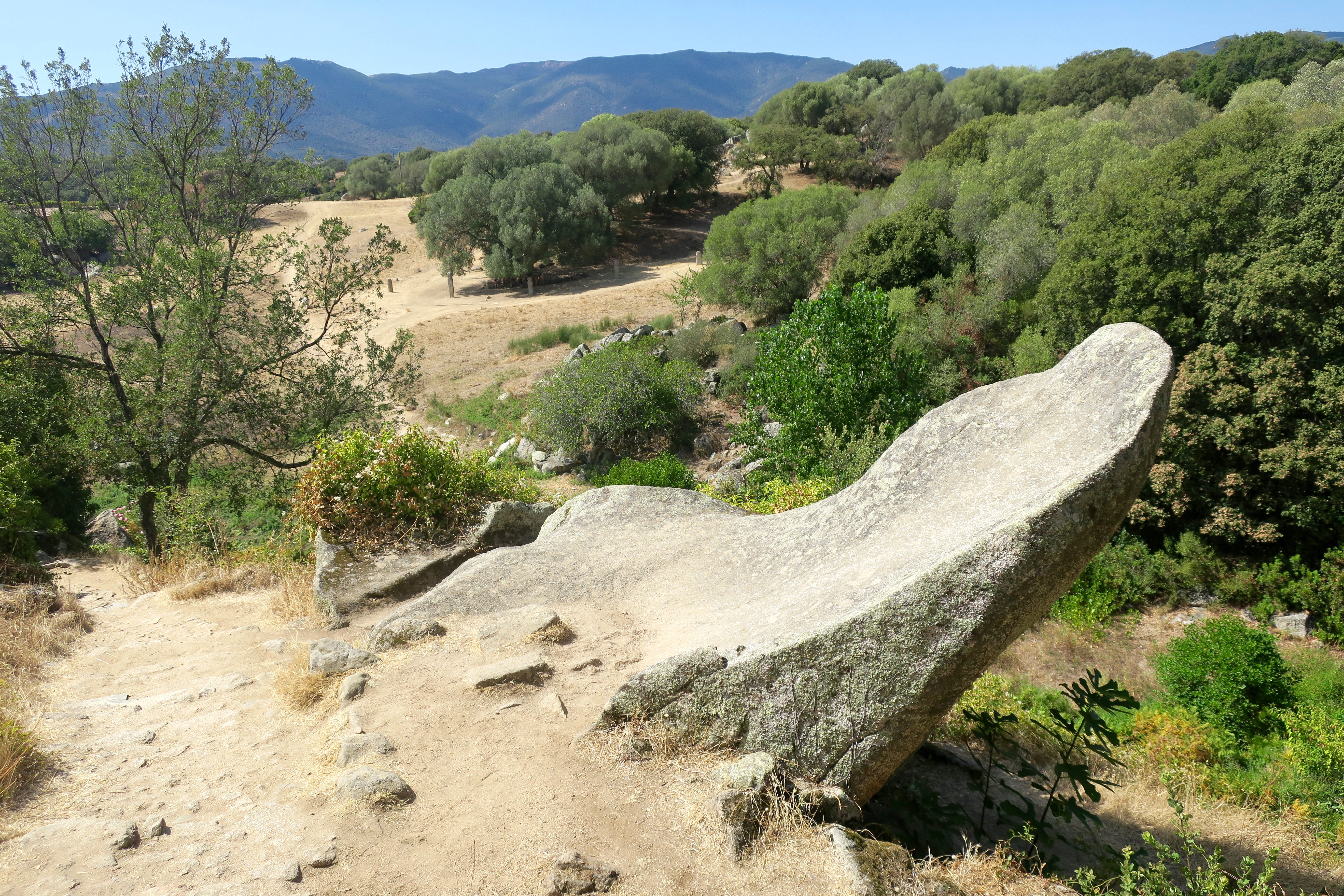
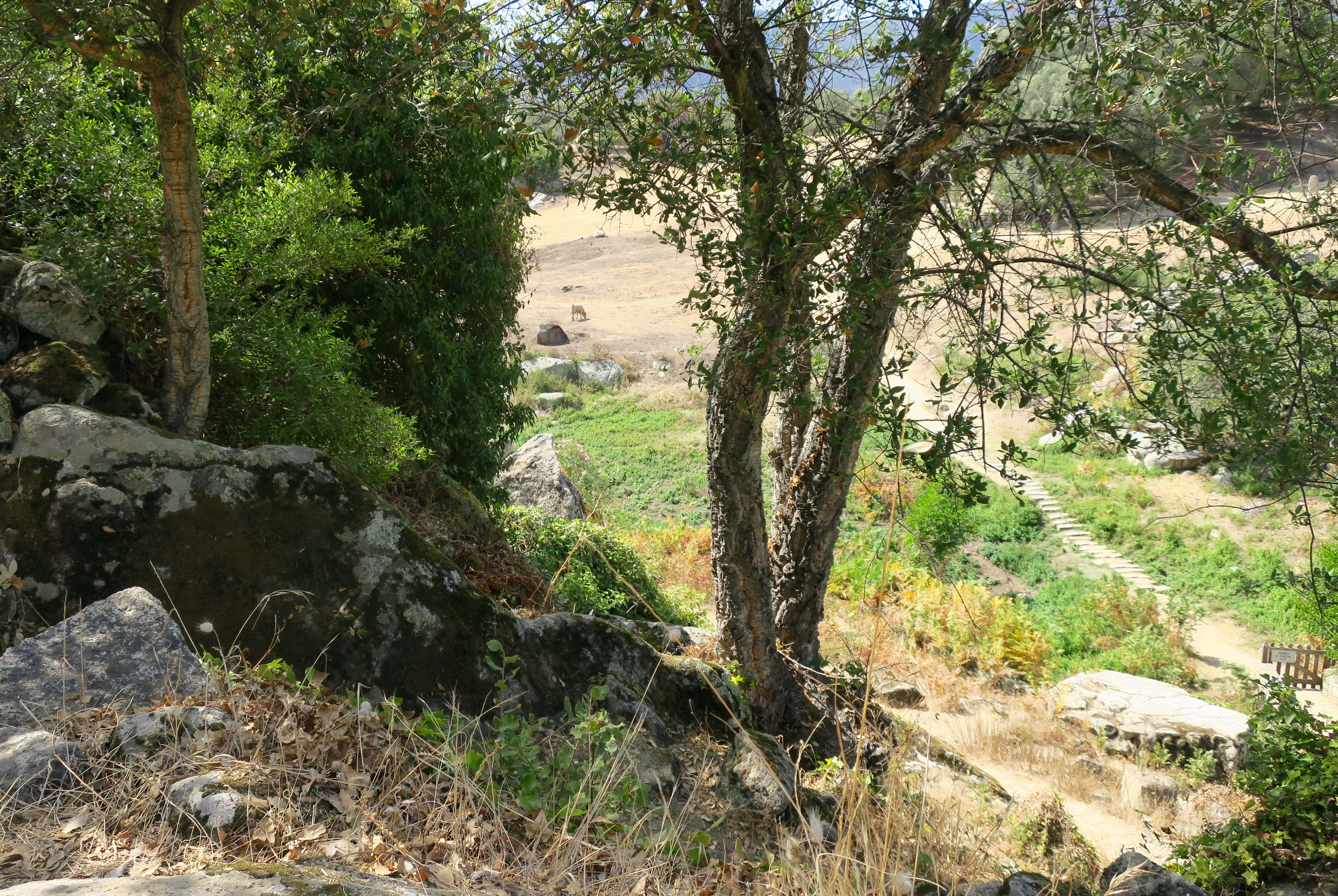
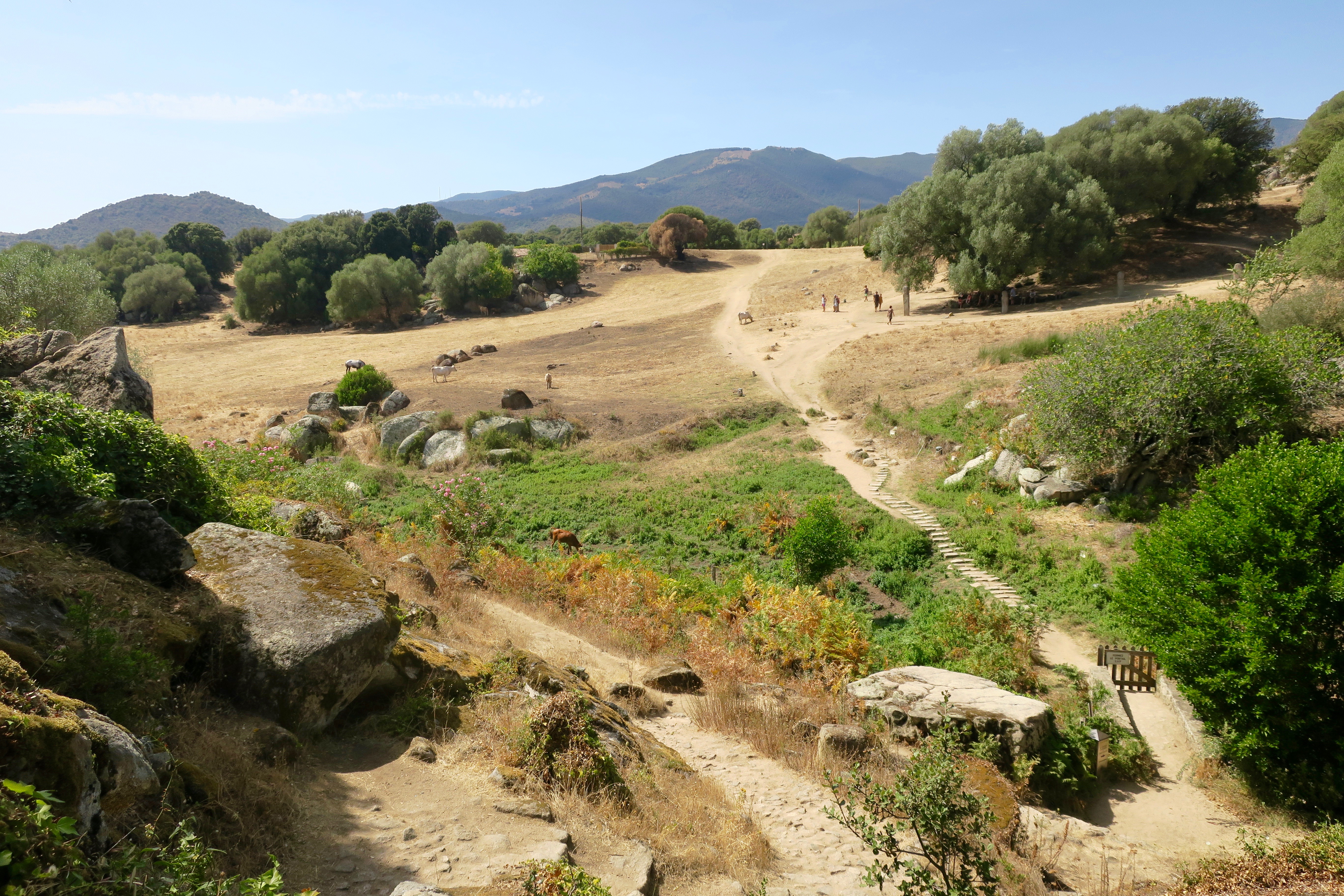
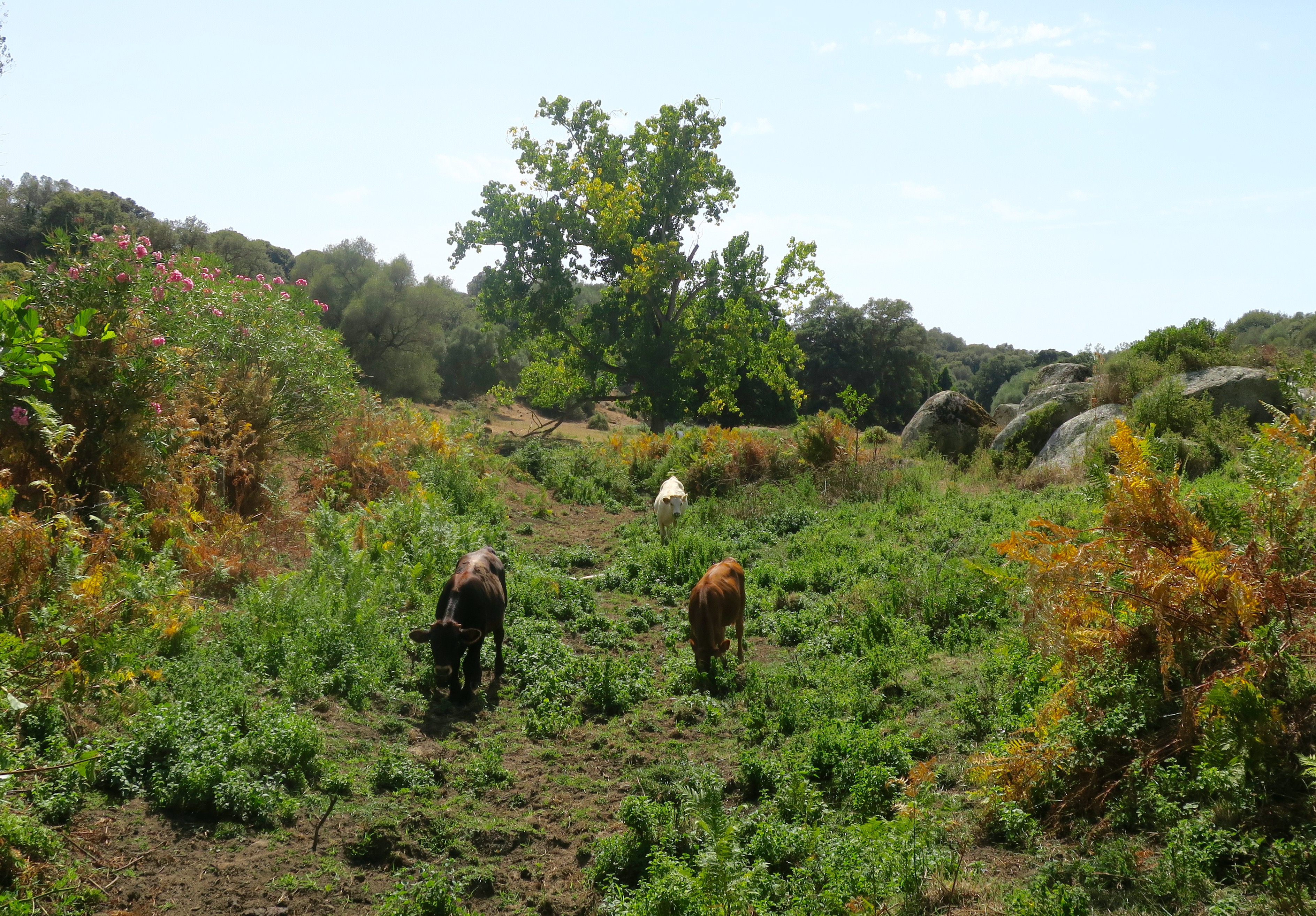
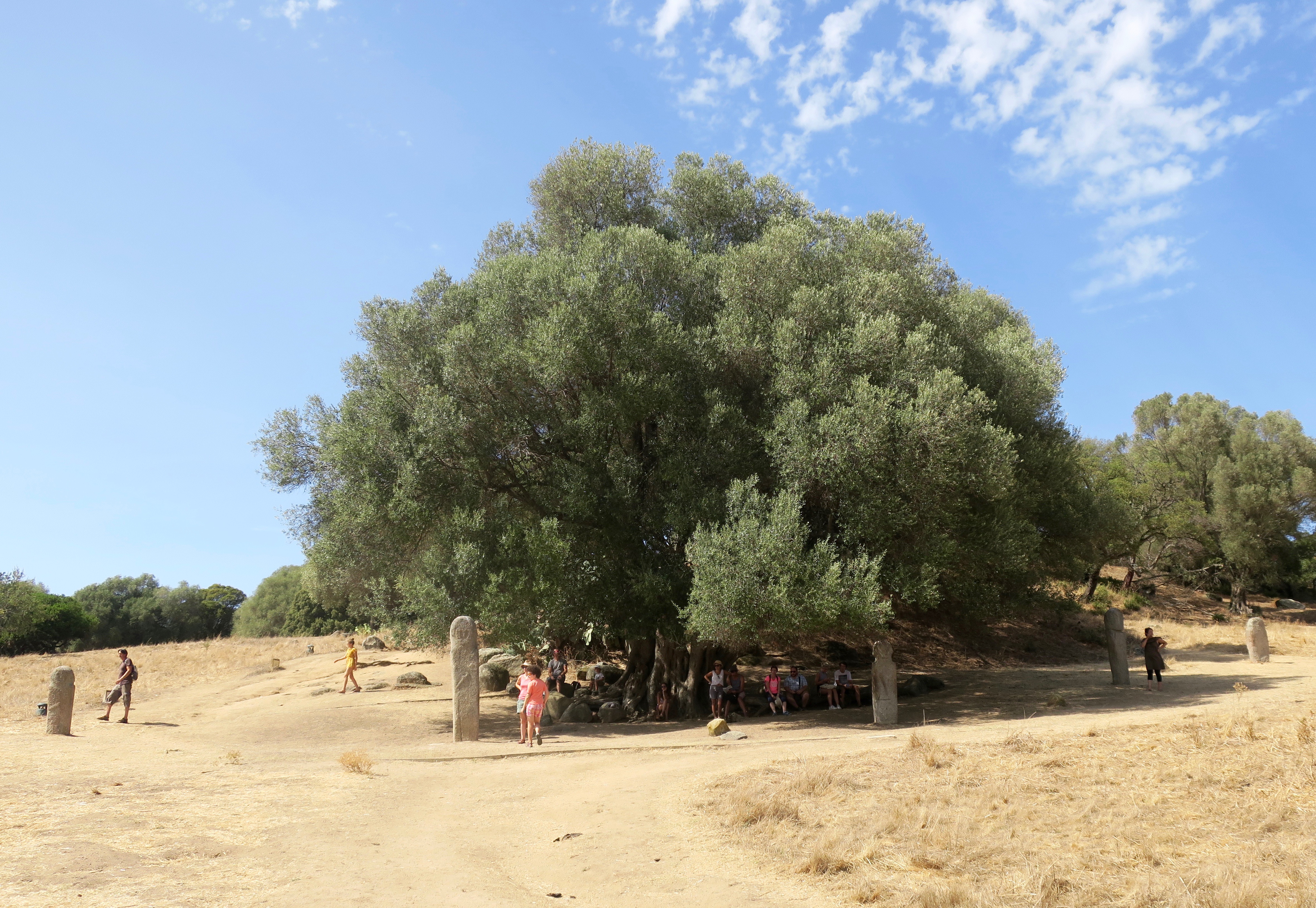
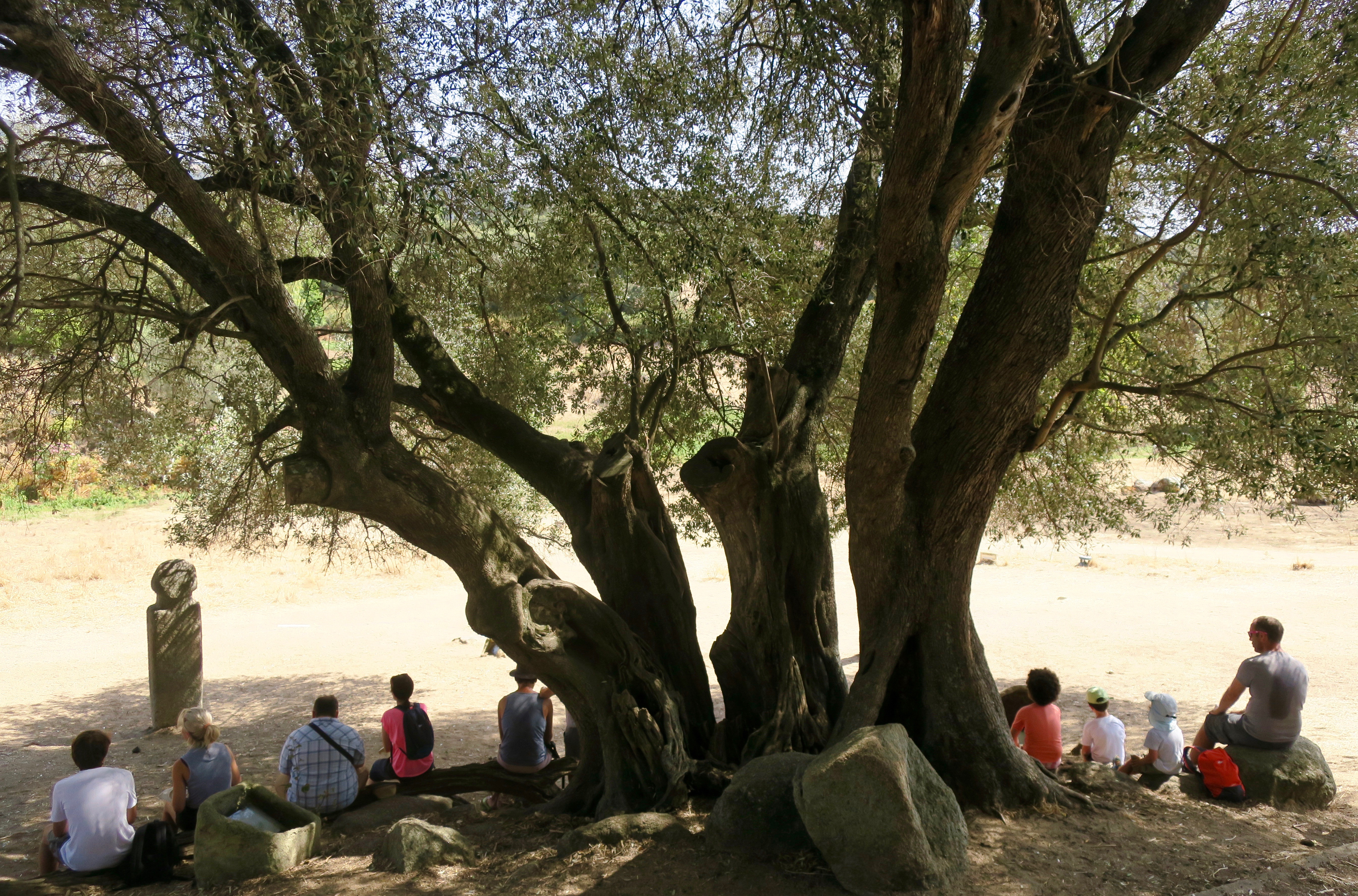
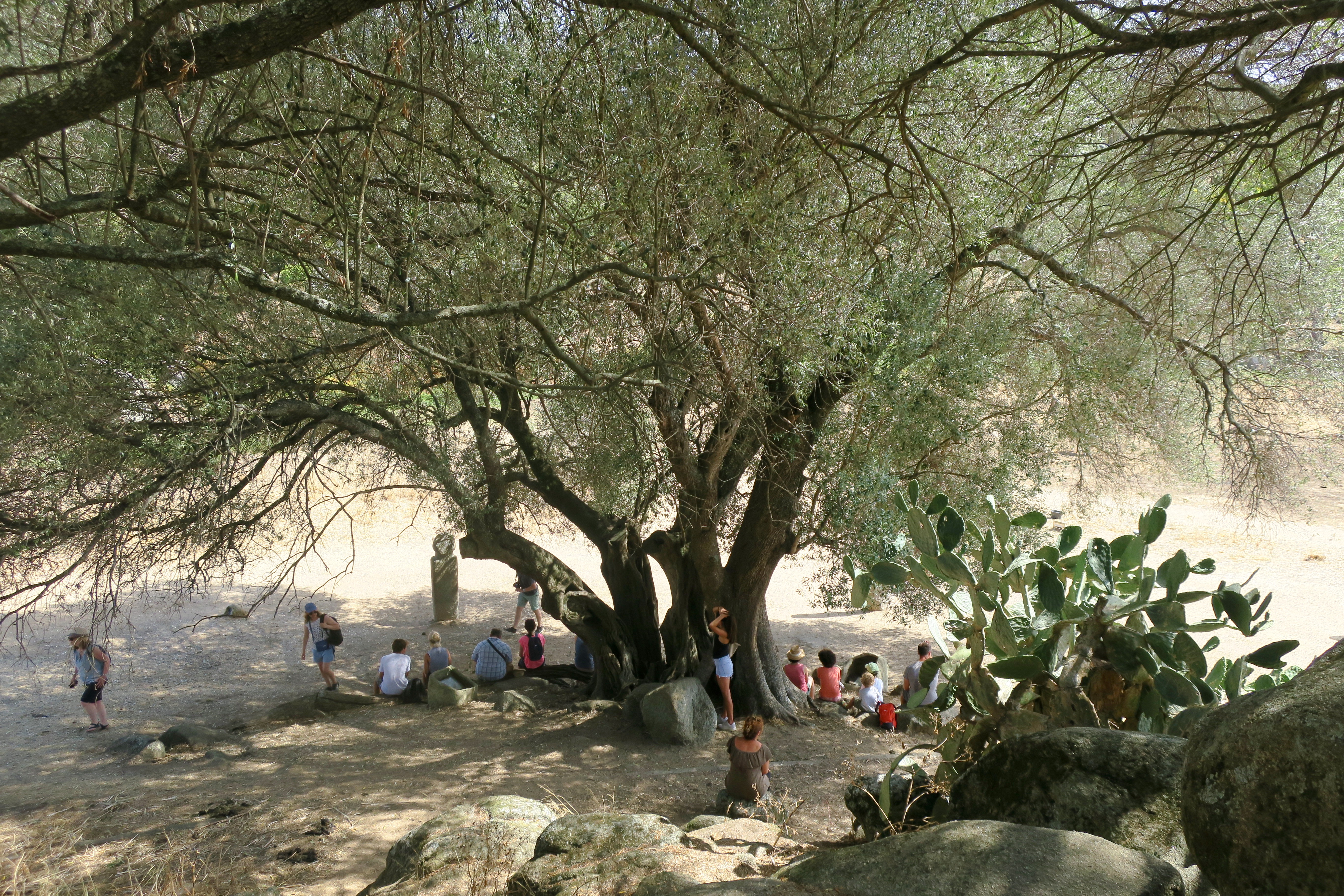
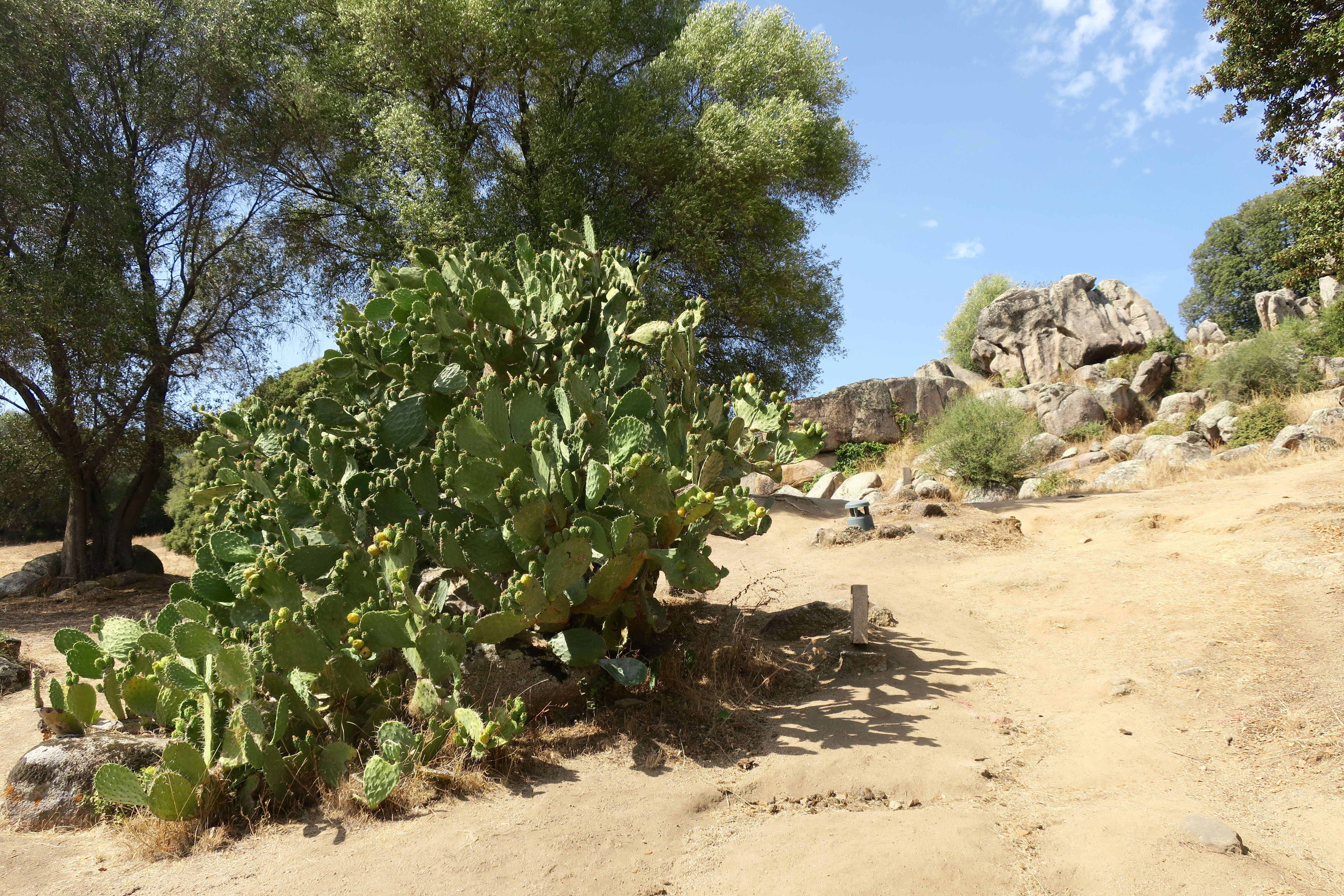
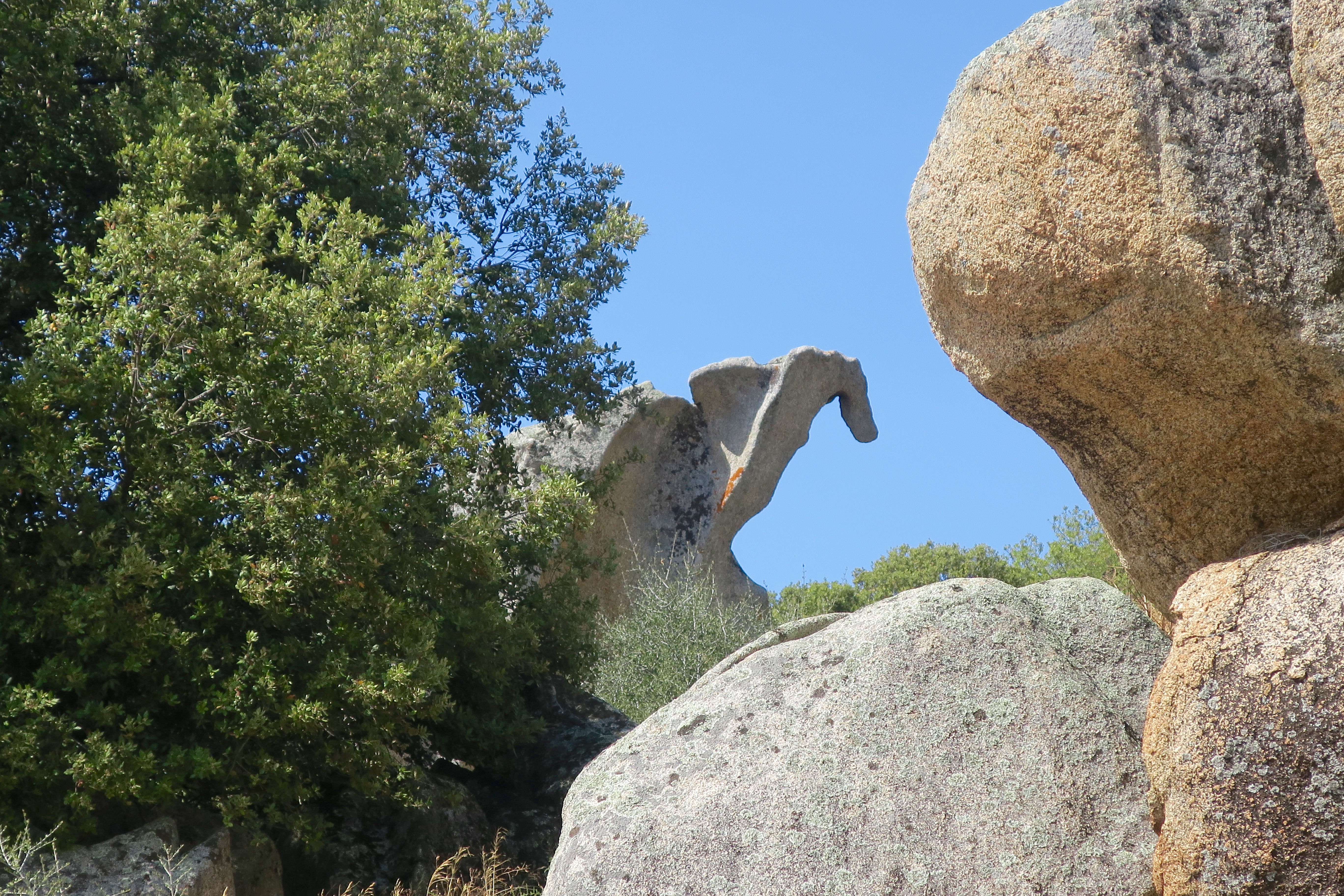
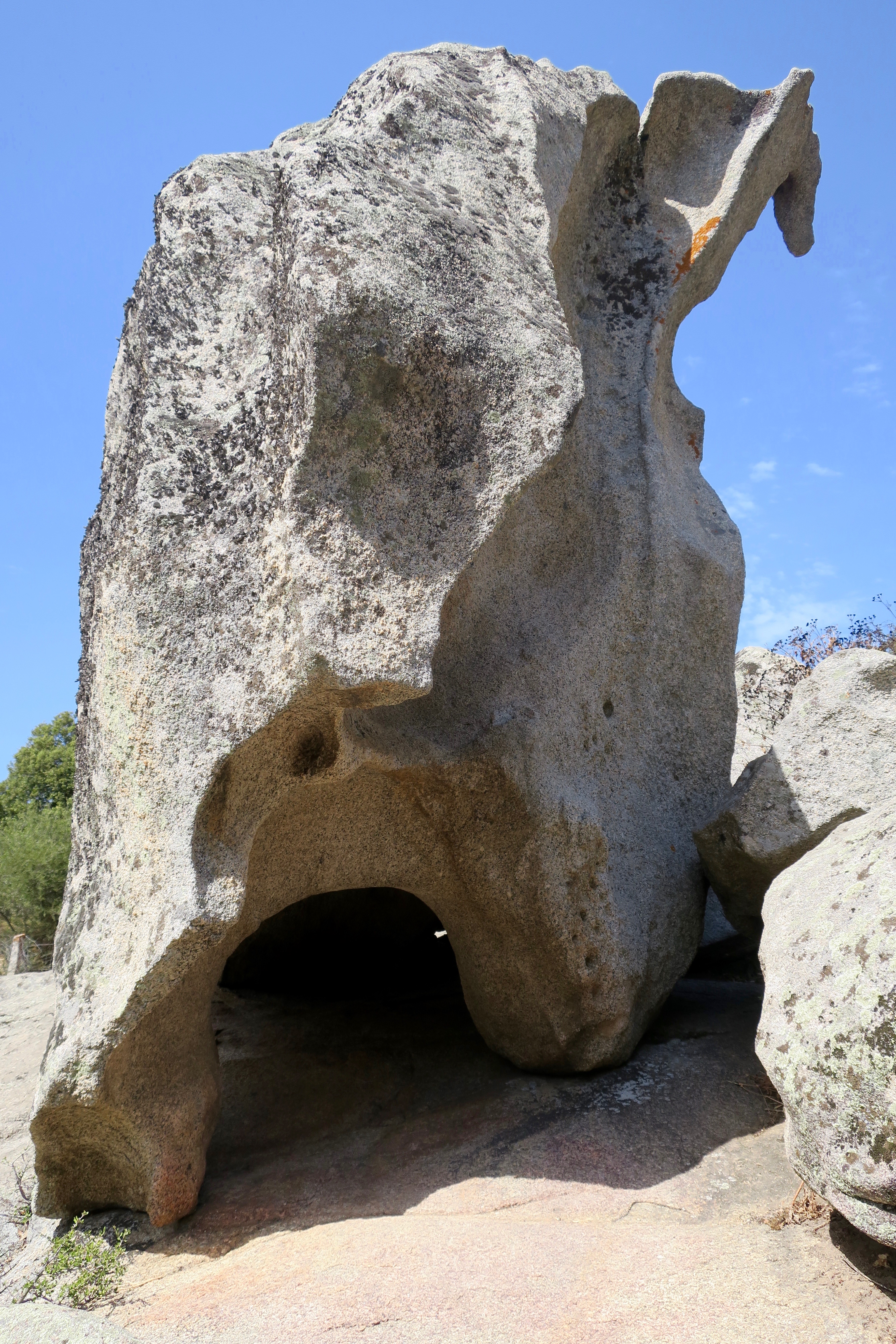



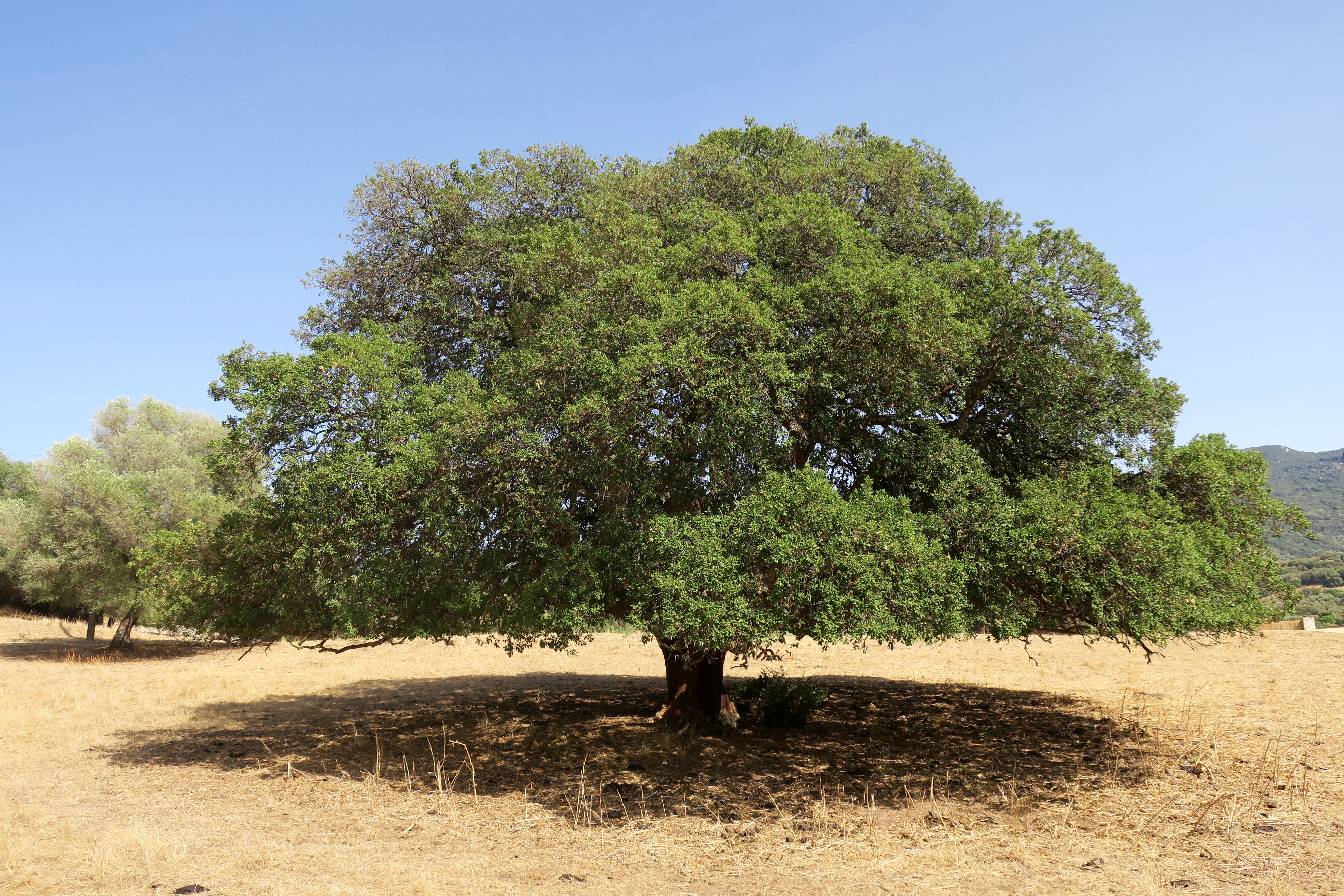
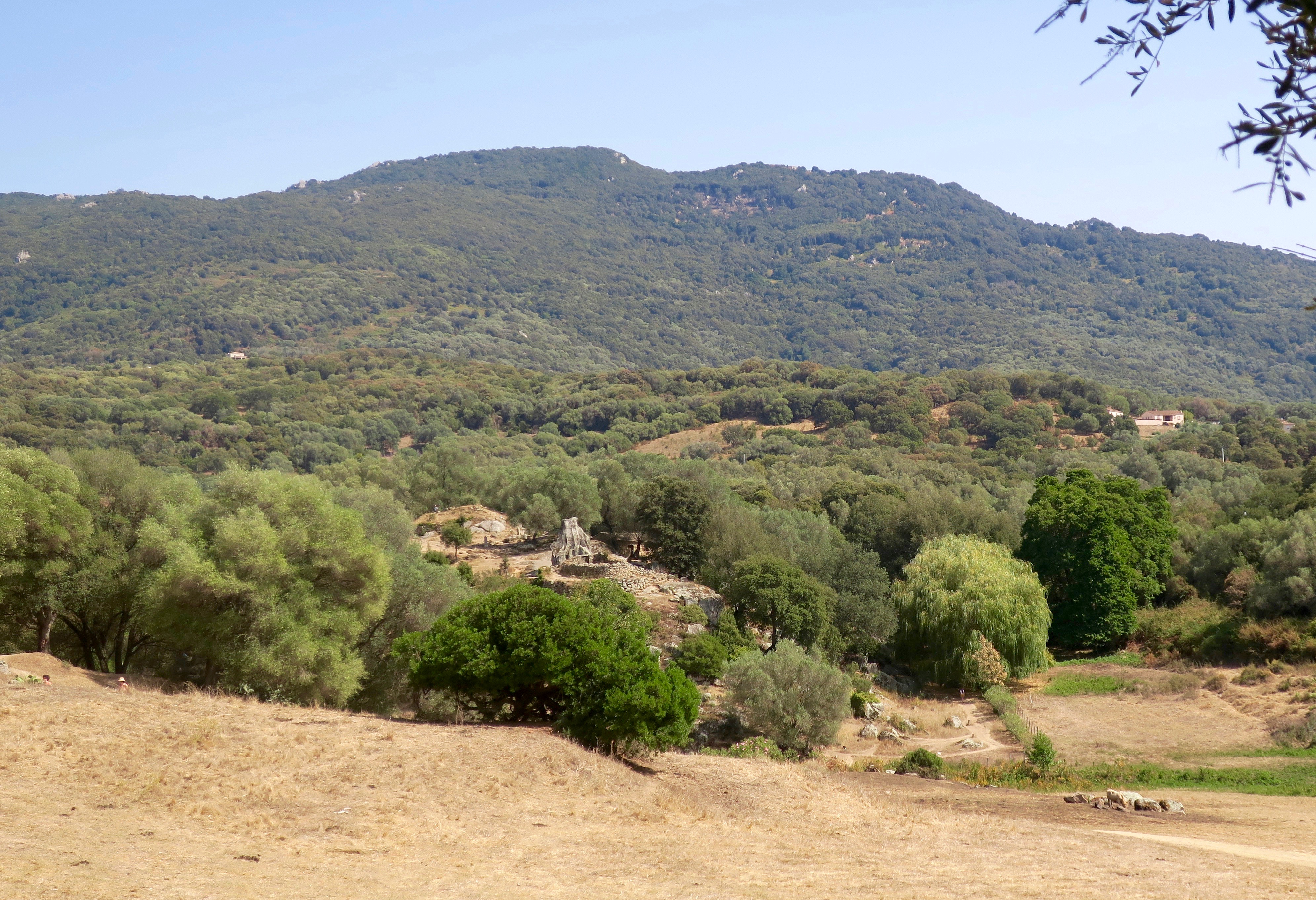
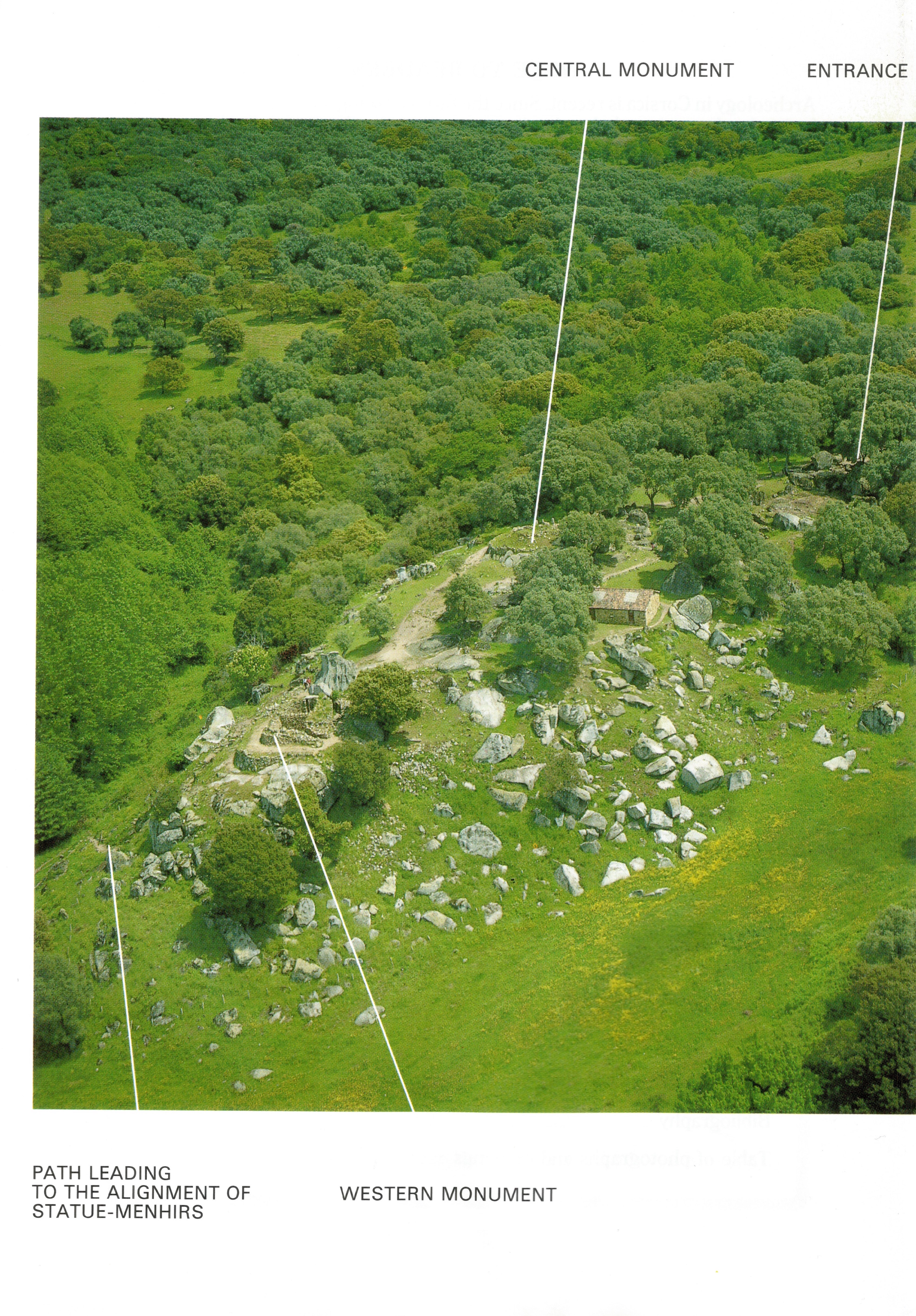
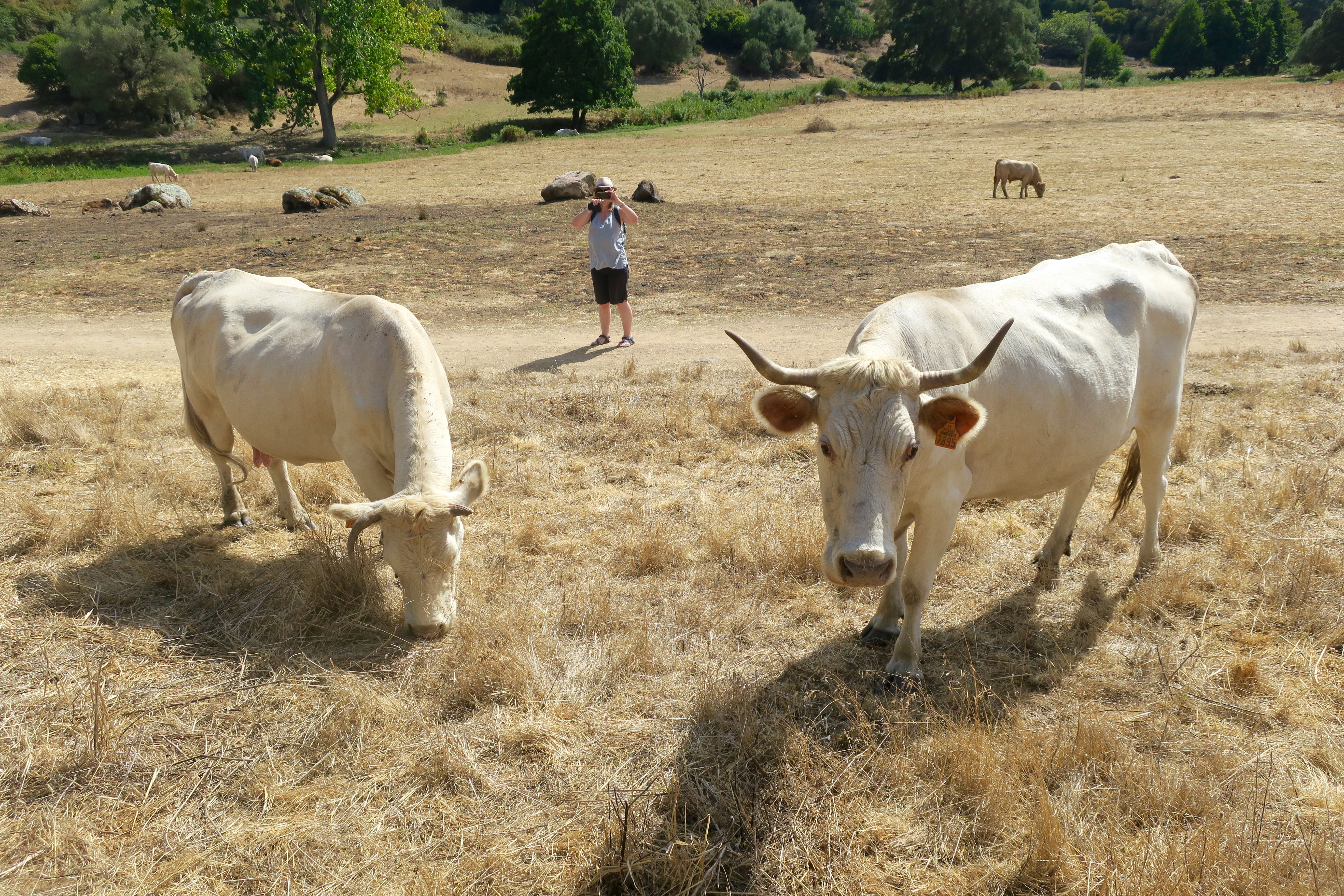

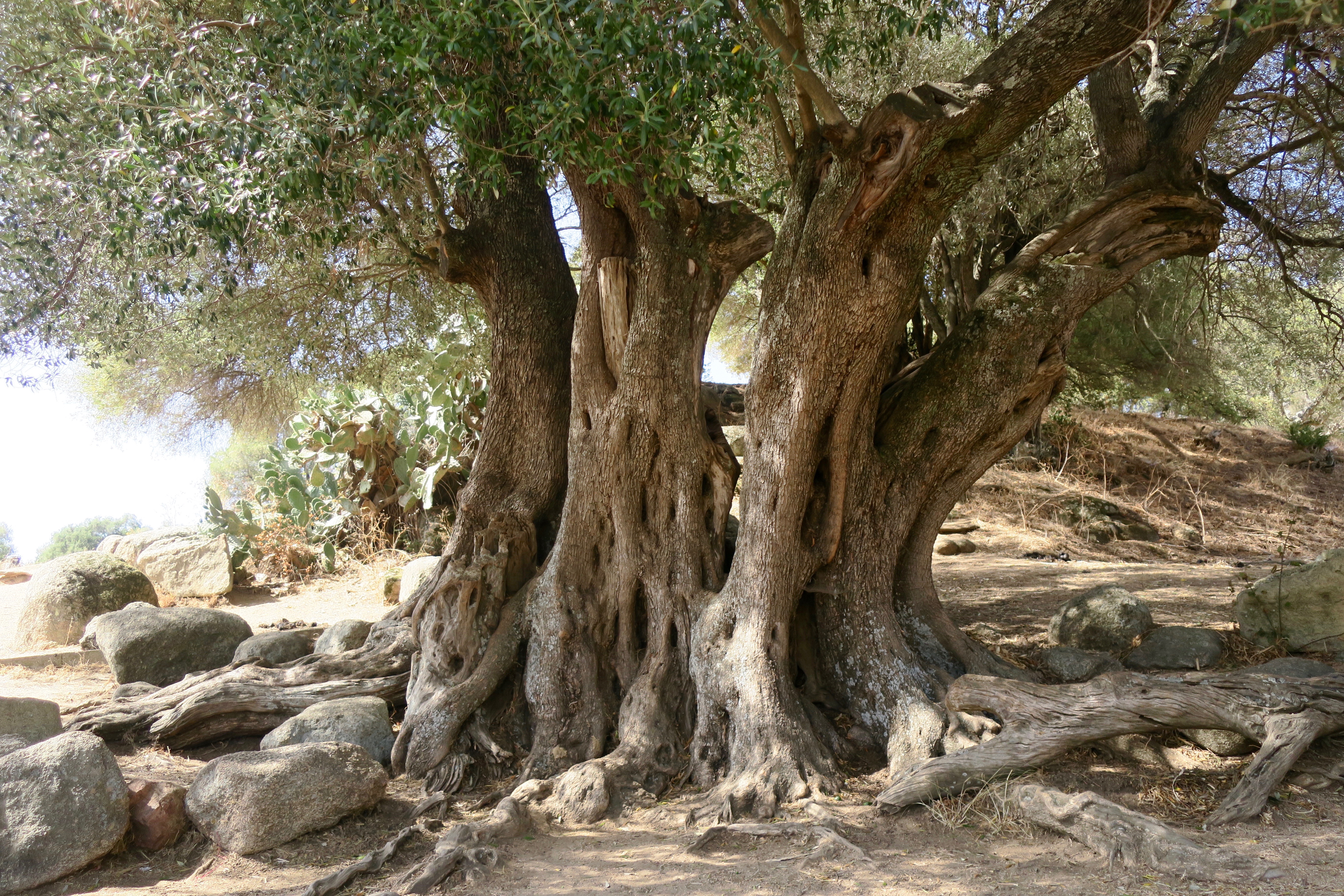


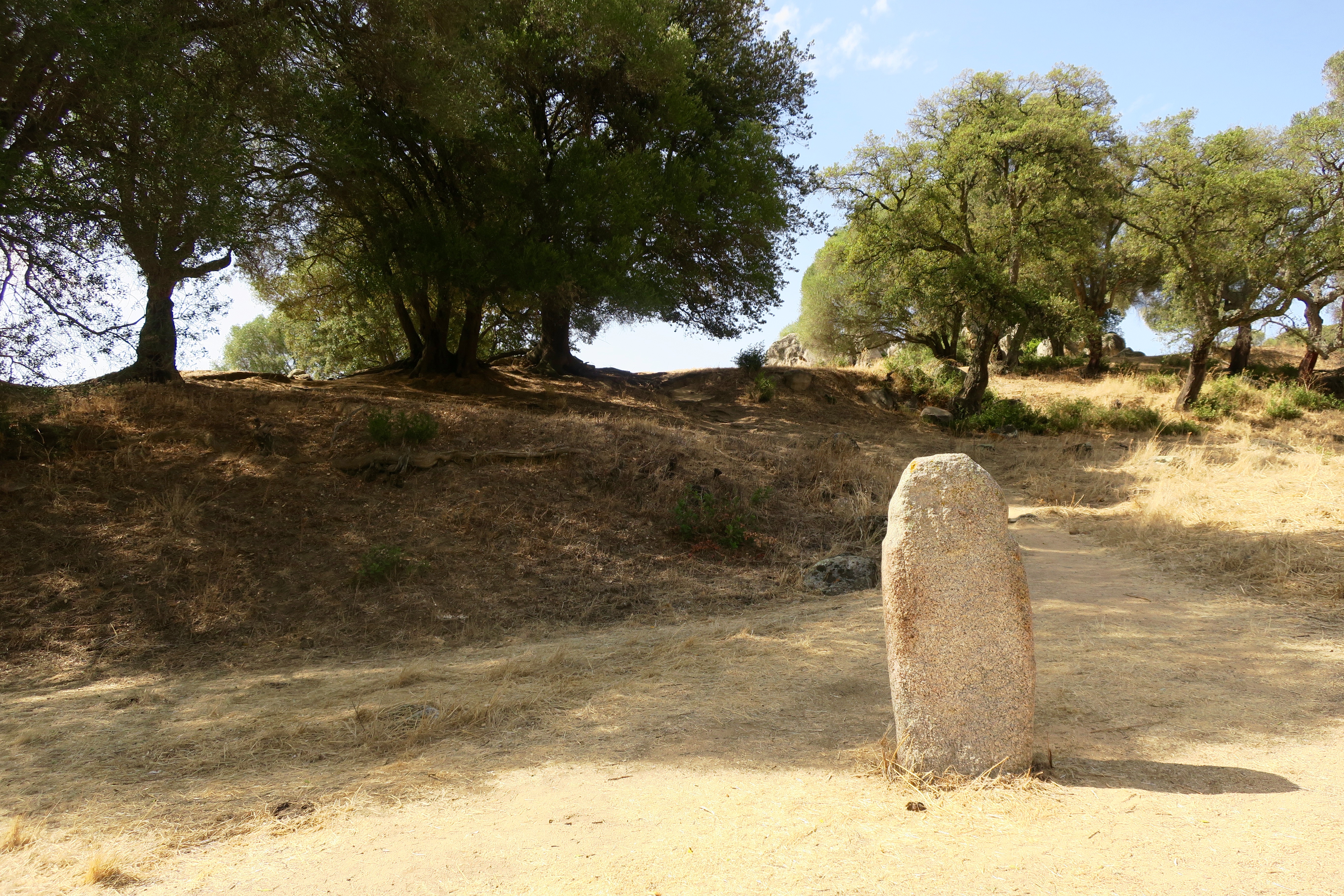

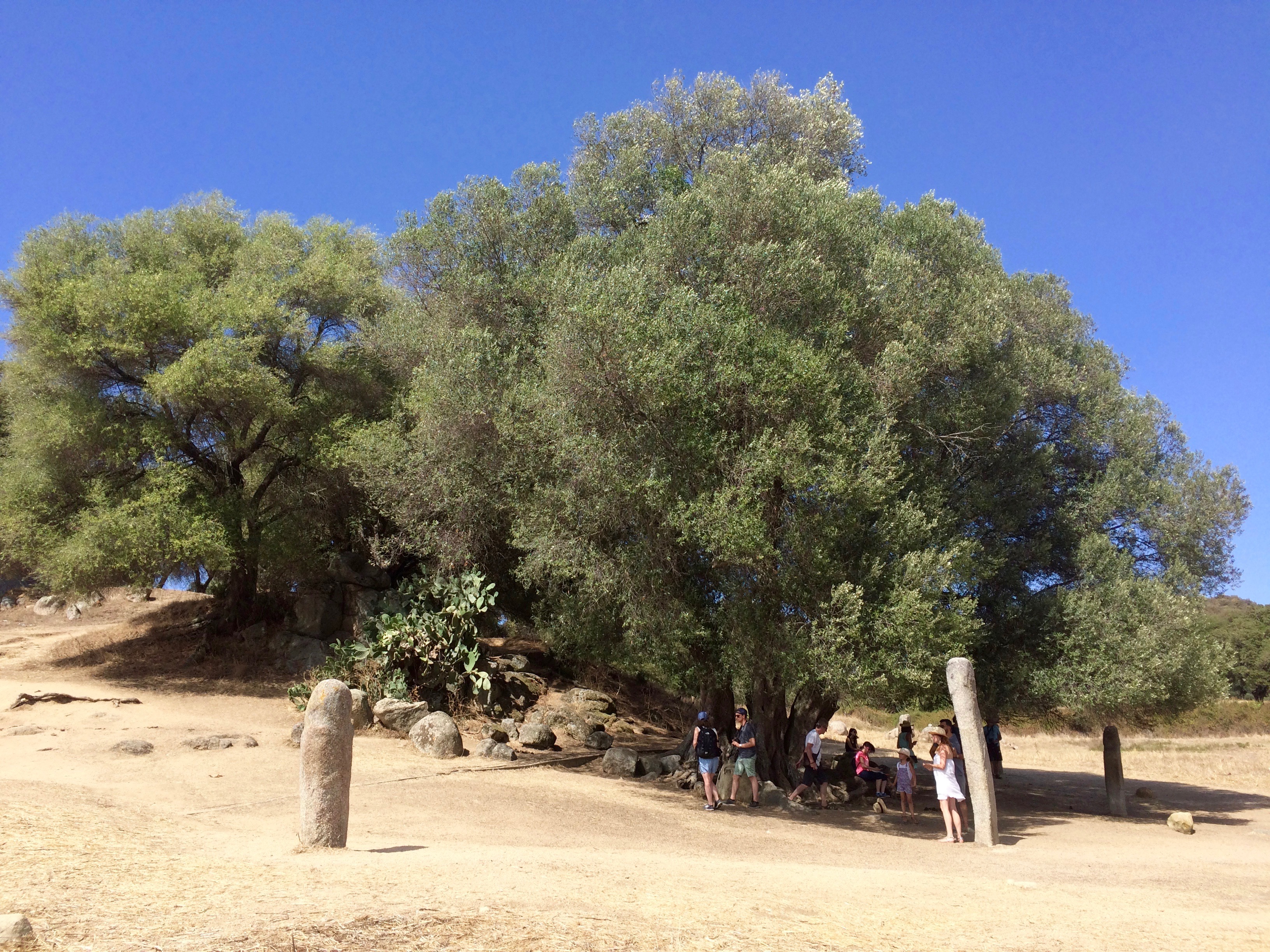
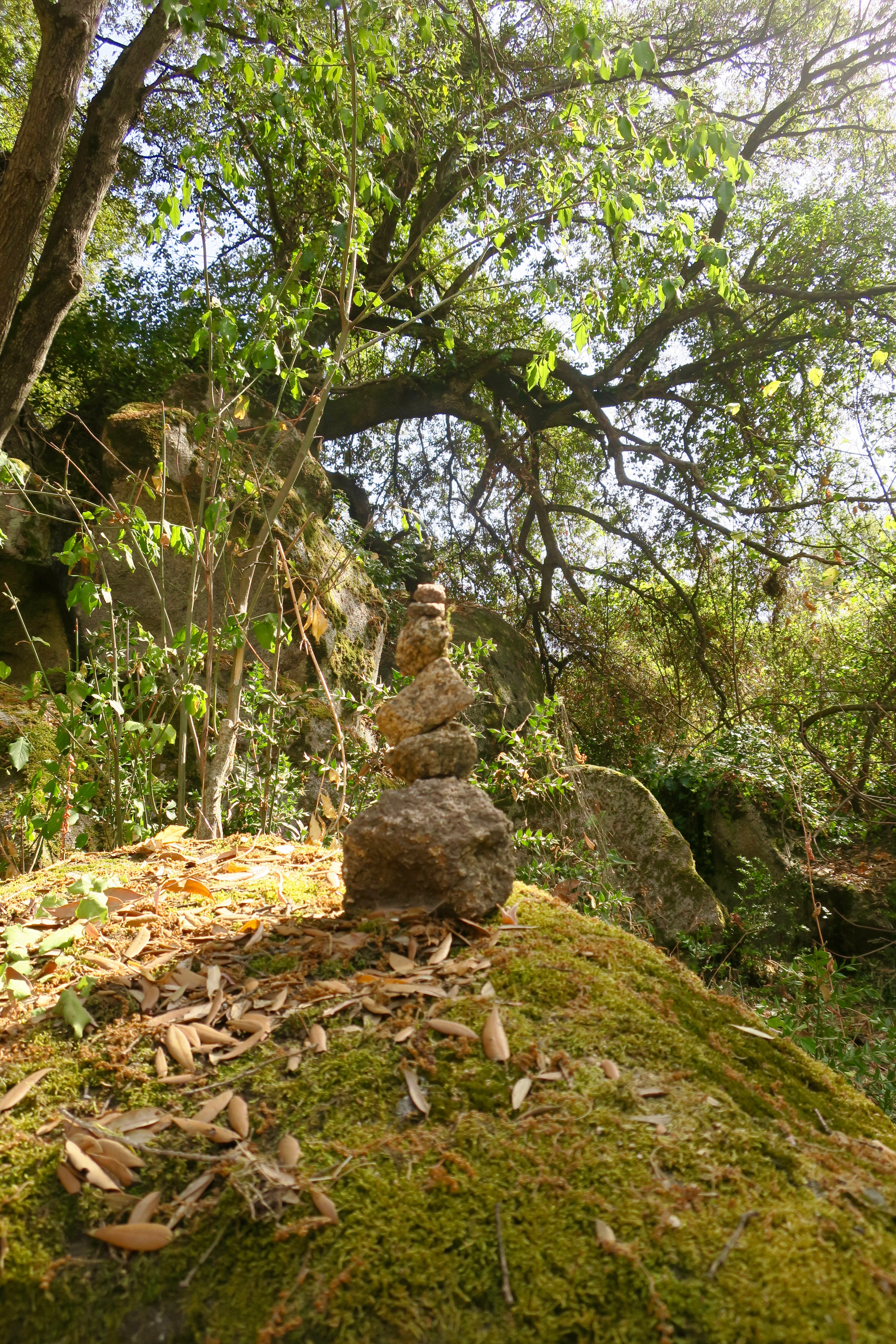
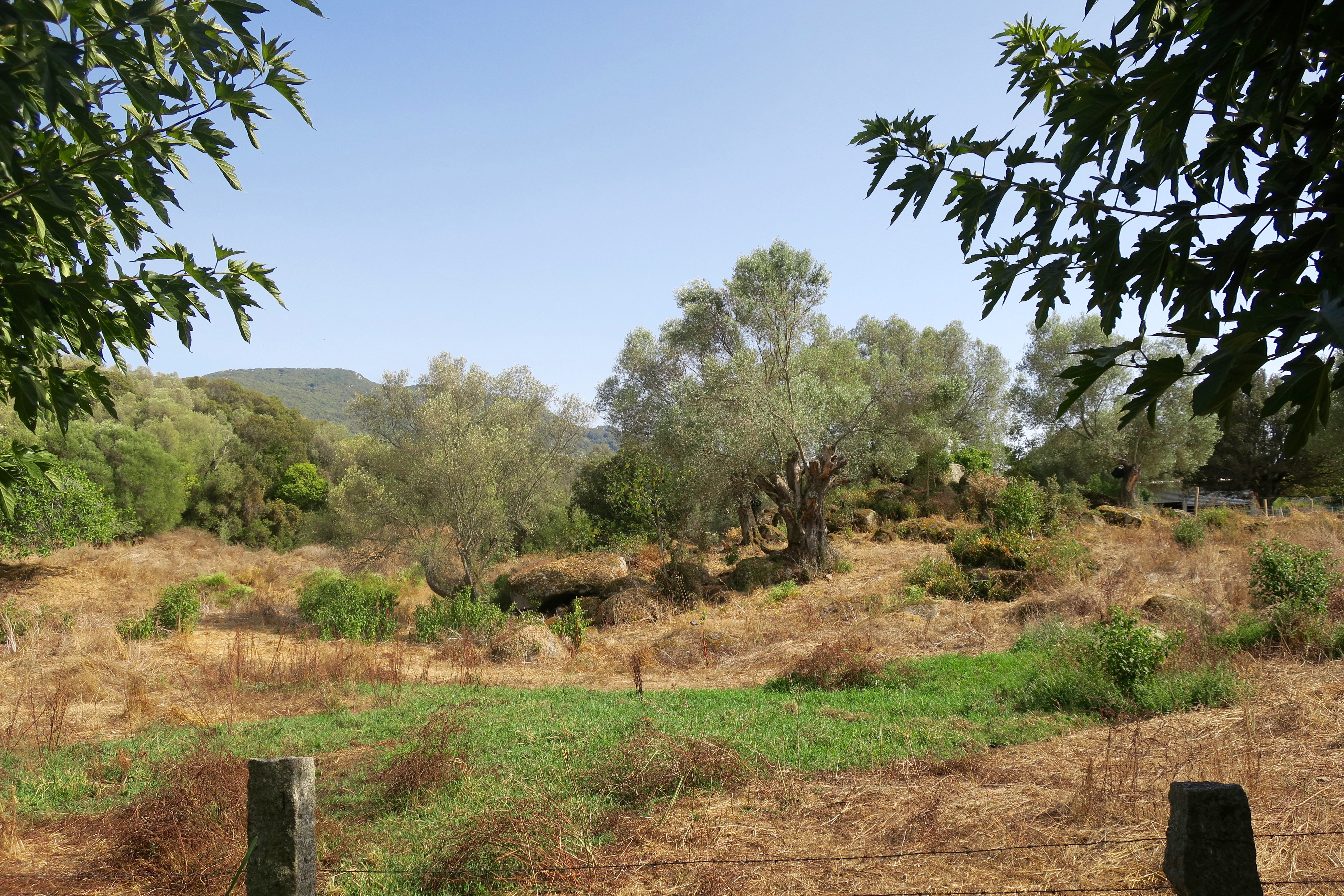
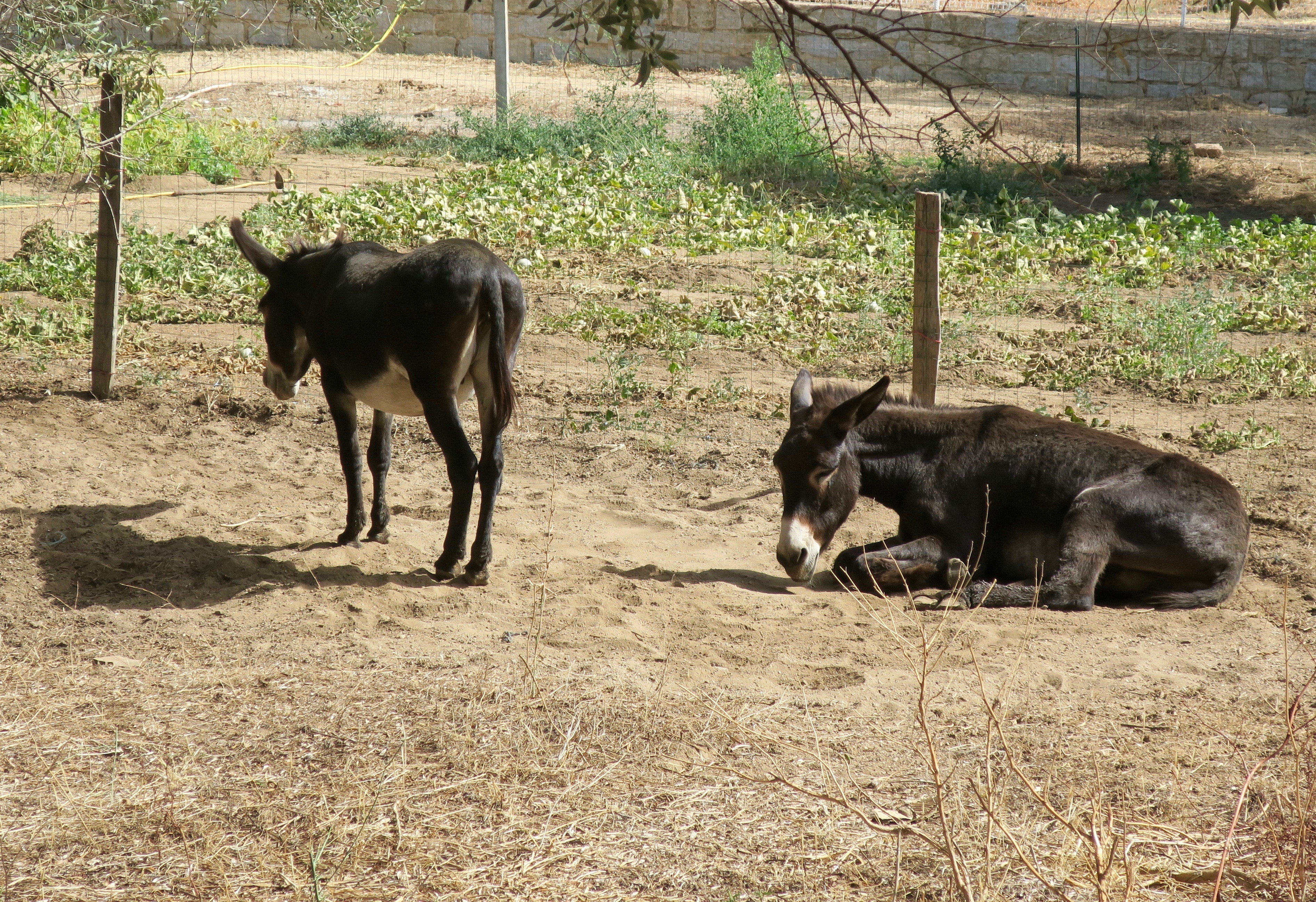

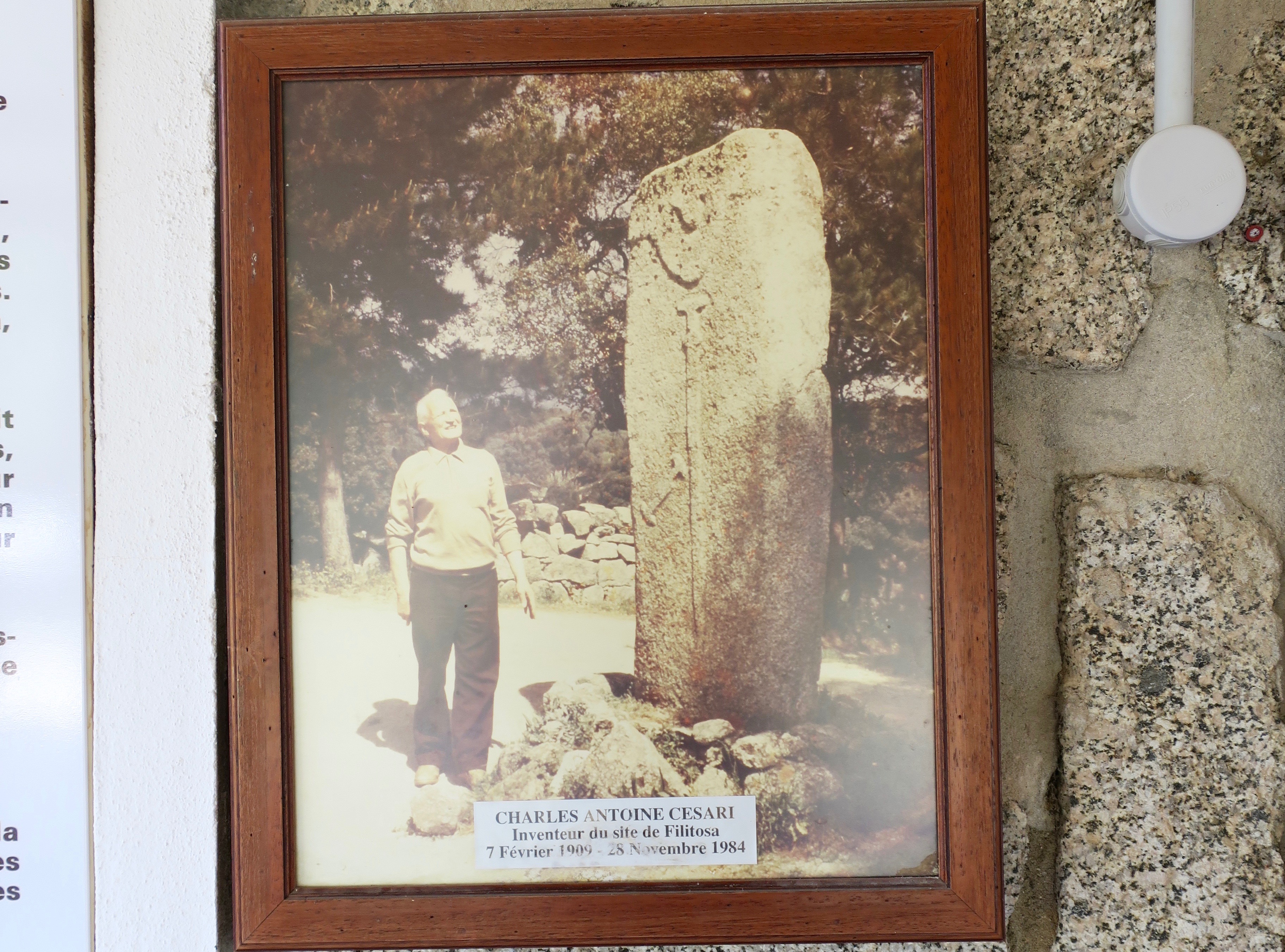
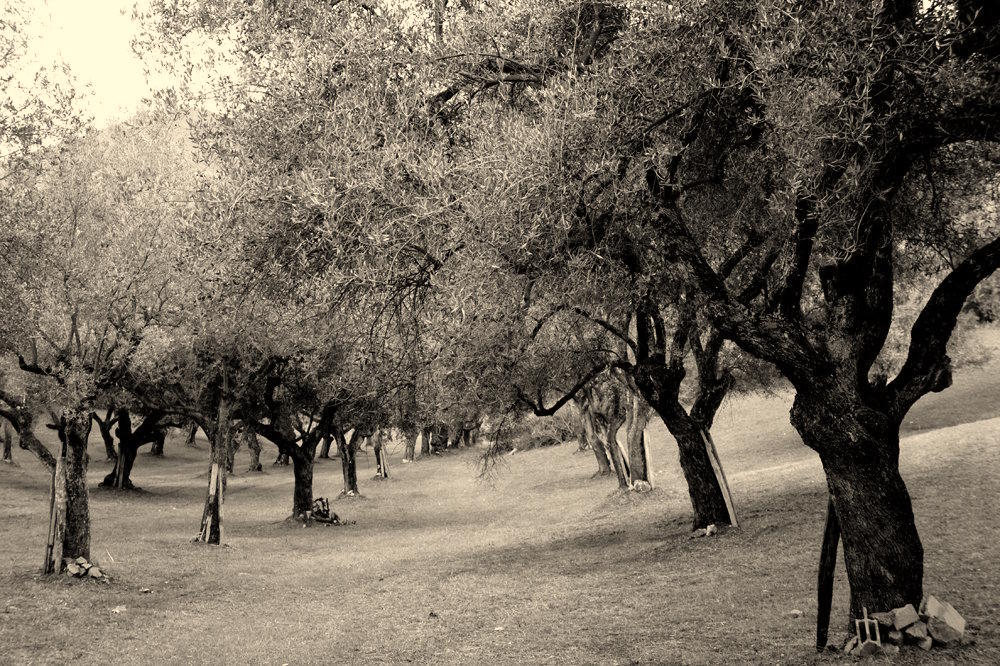
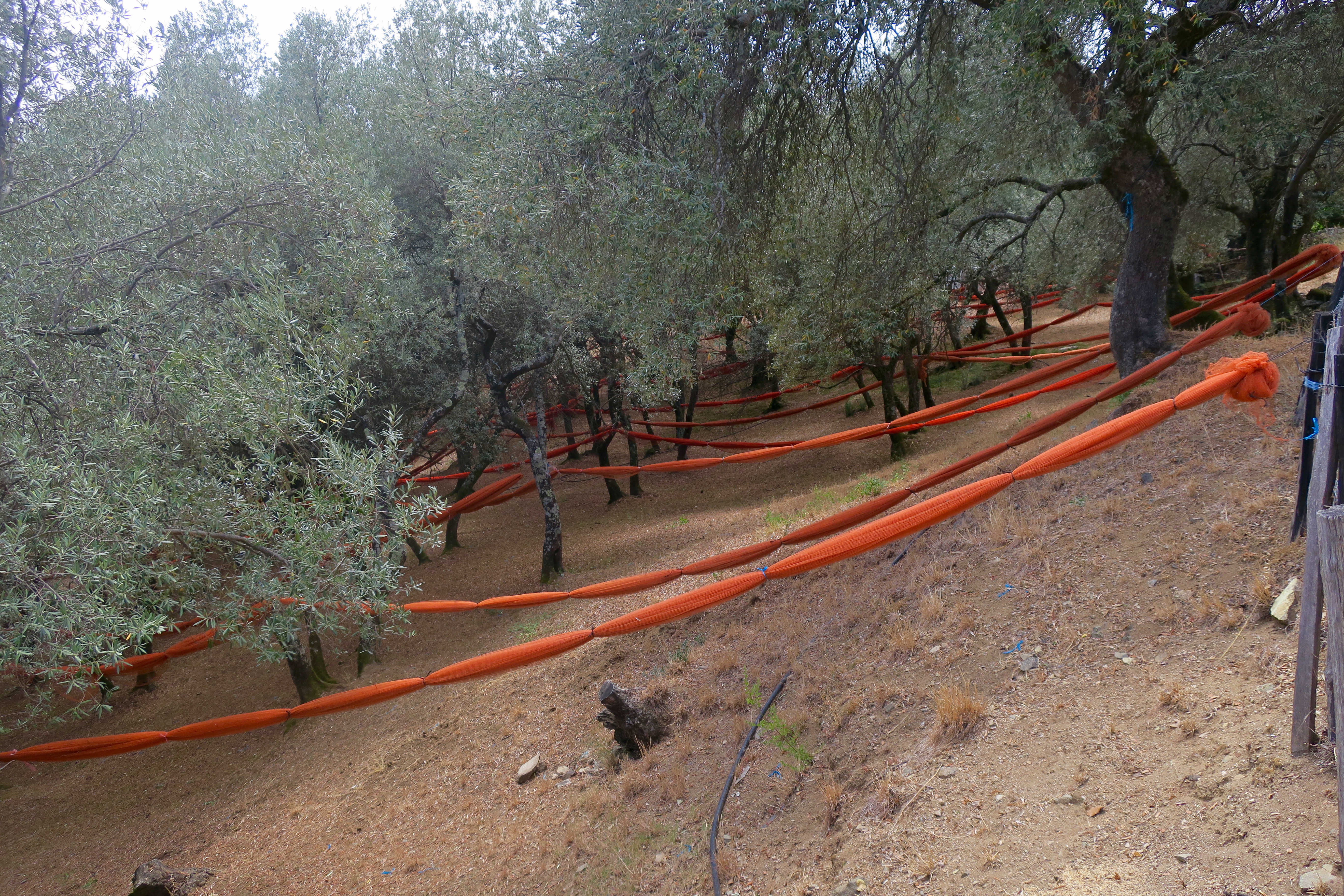


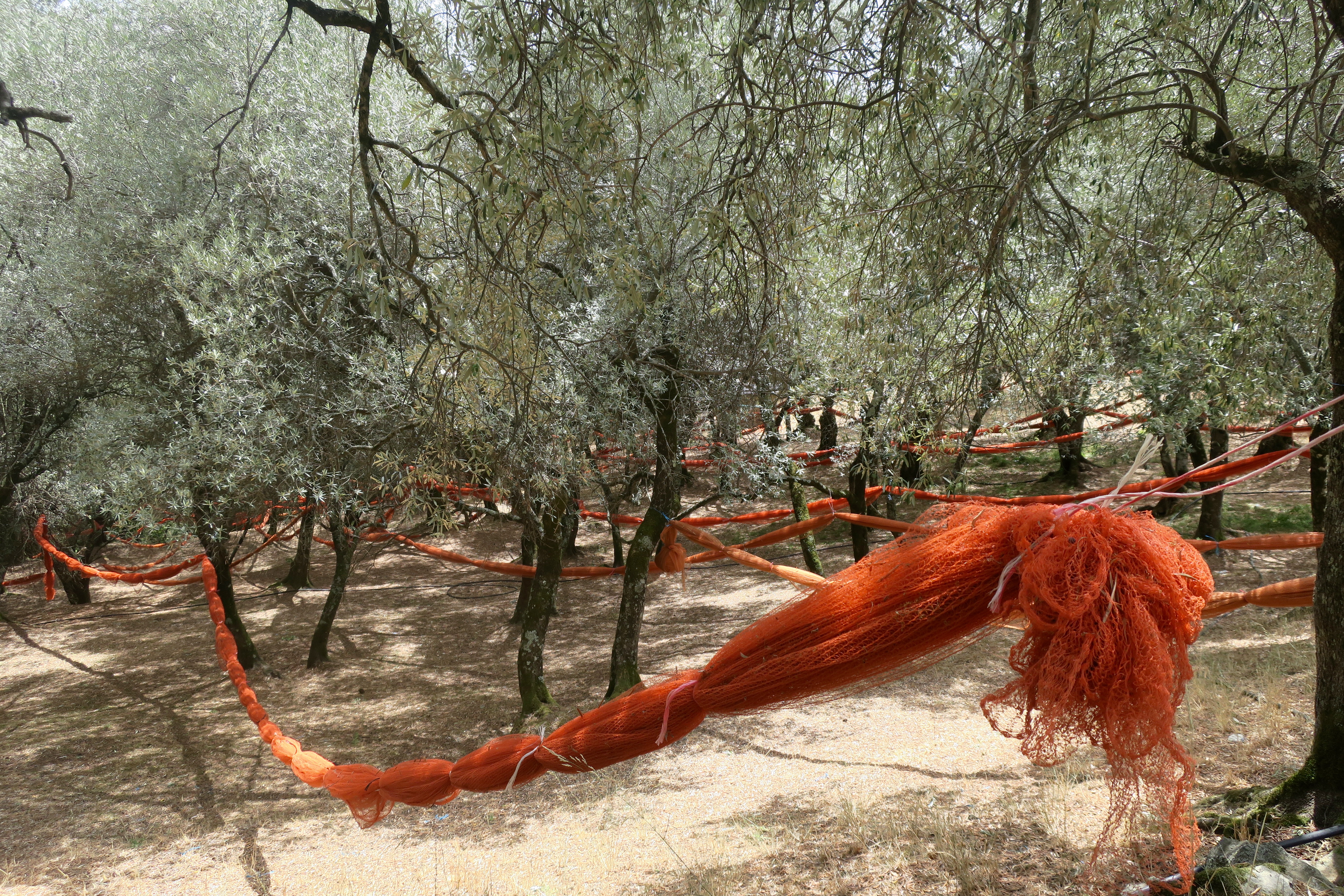
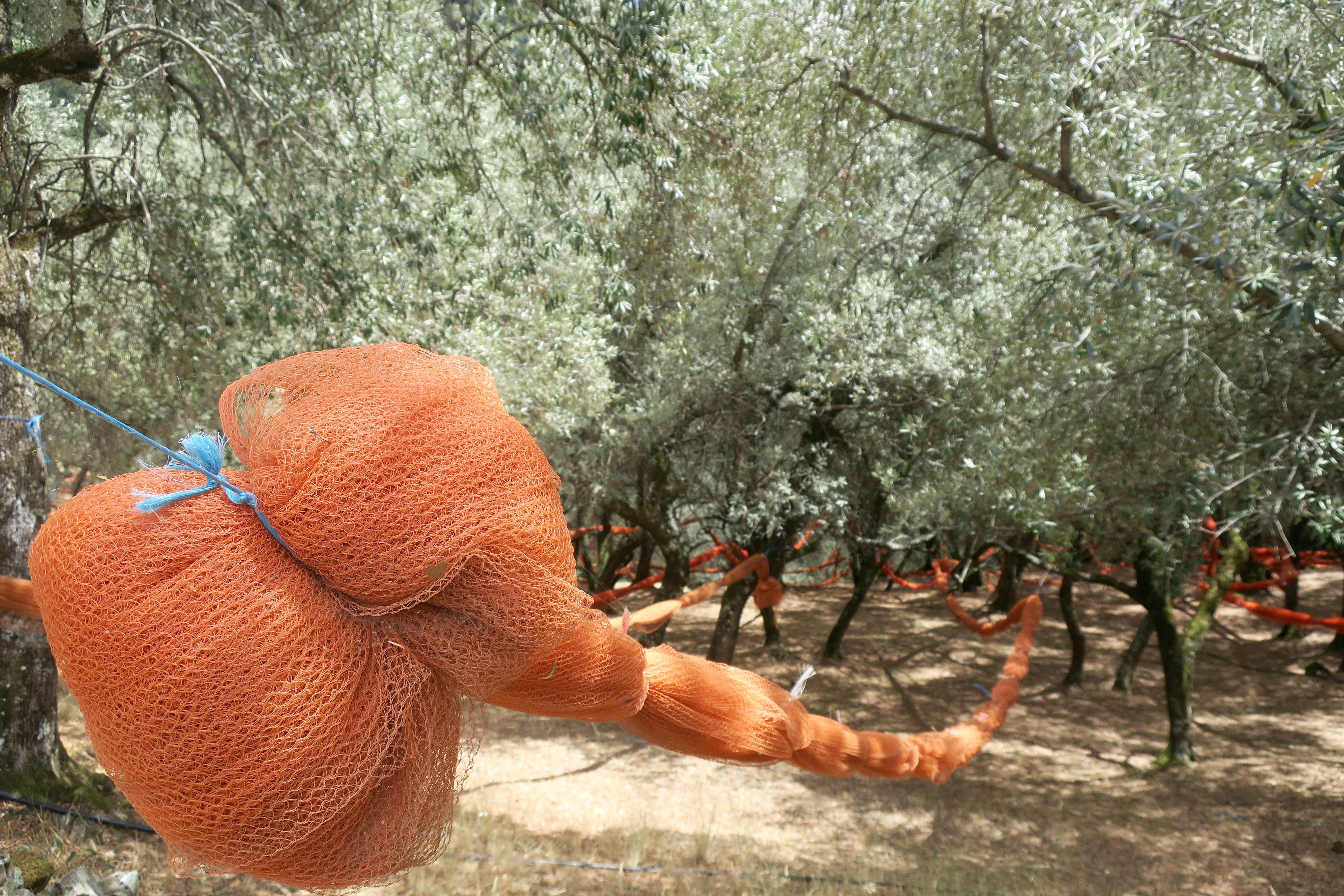
What a Wonderful Post! Thanks for the words and pictures!
Nice of you to say. Thanks Pat.